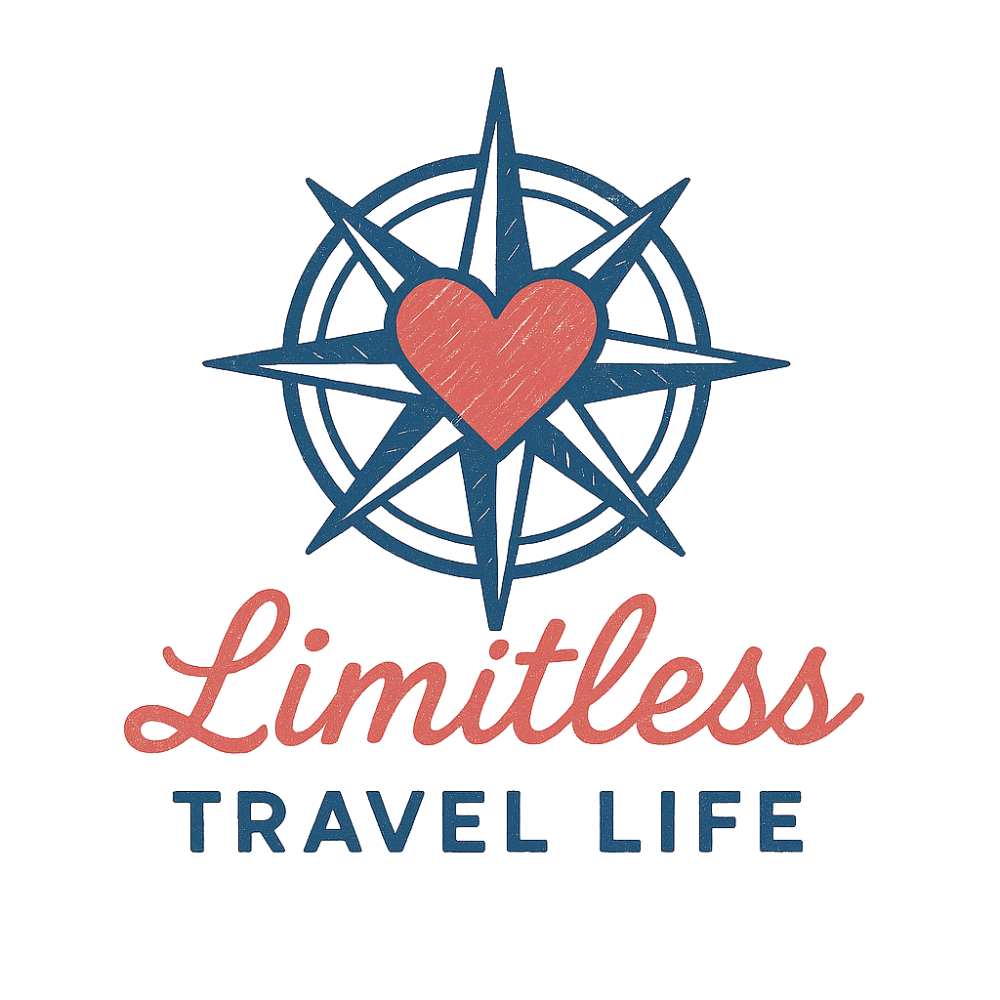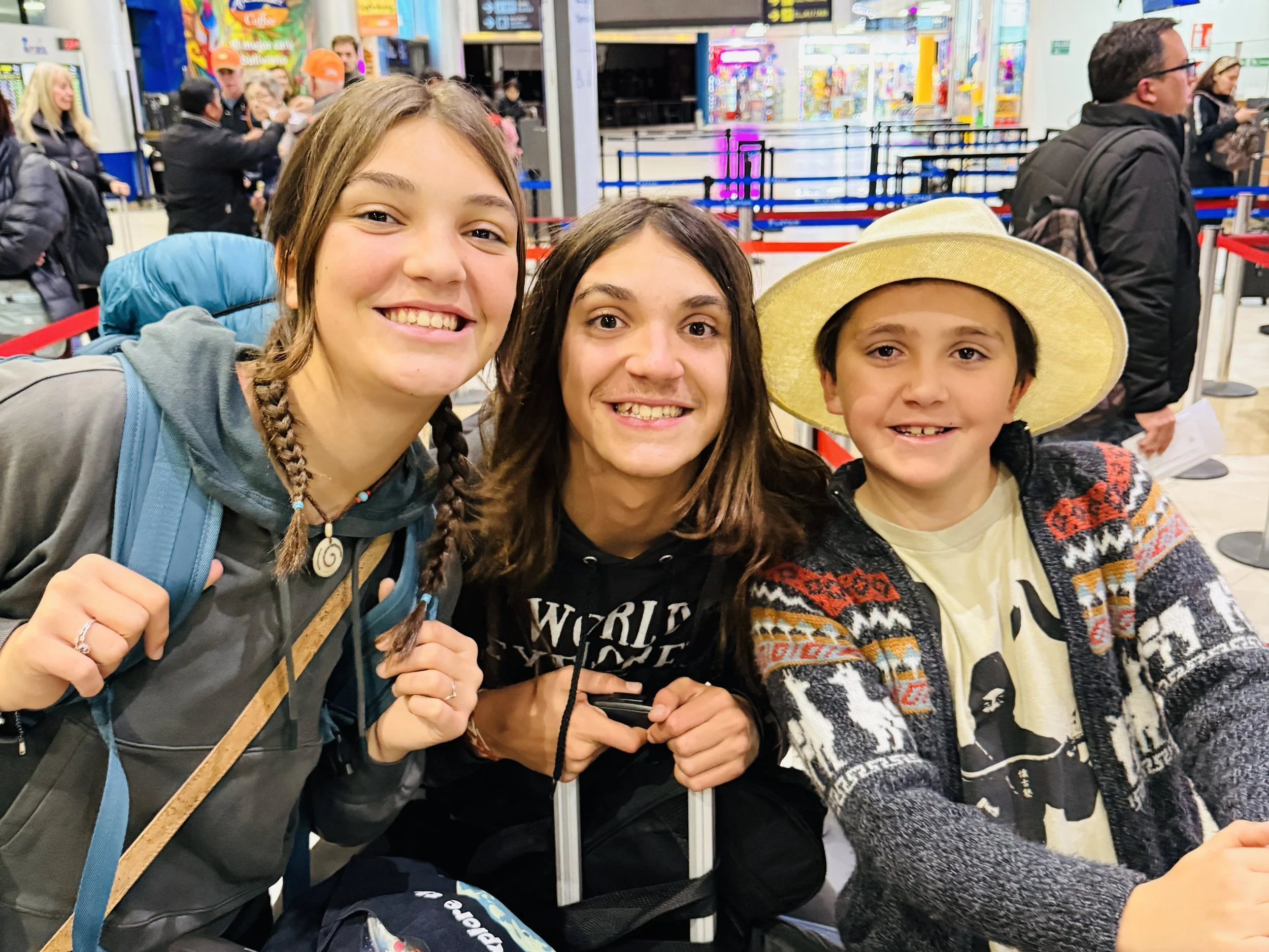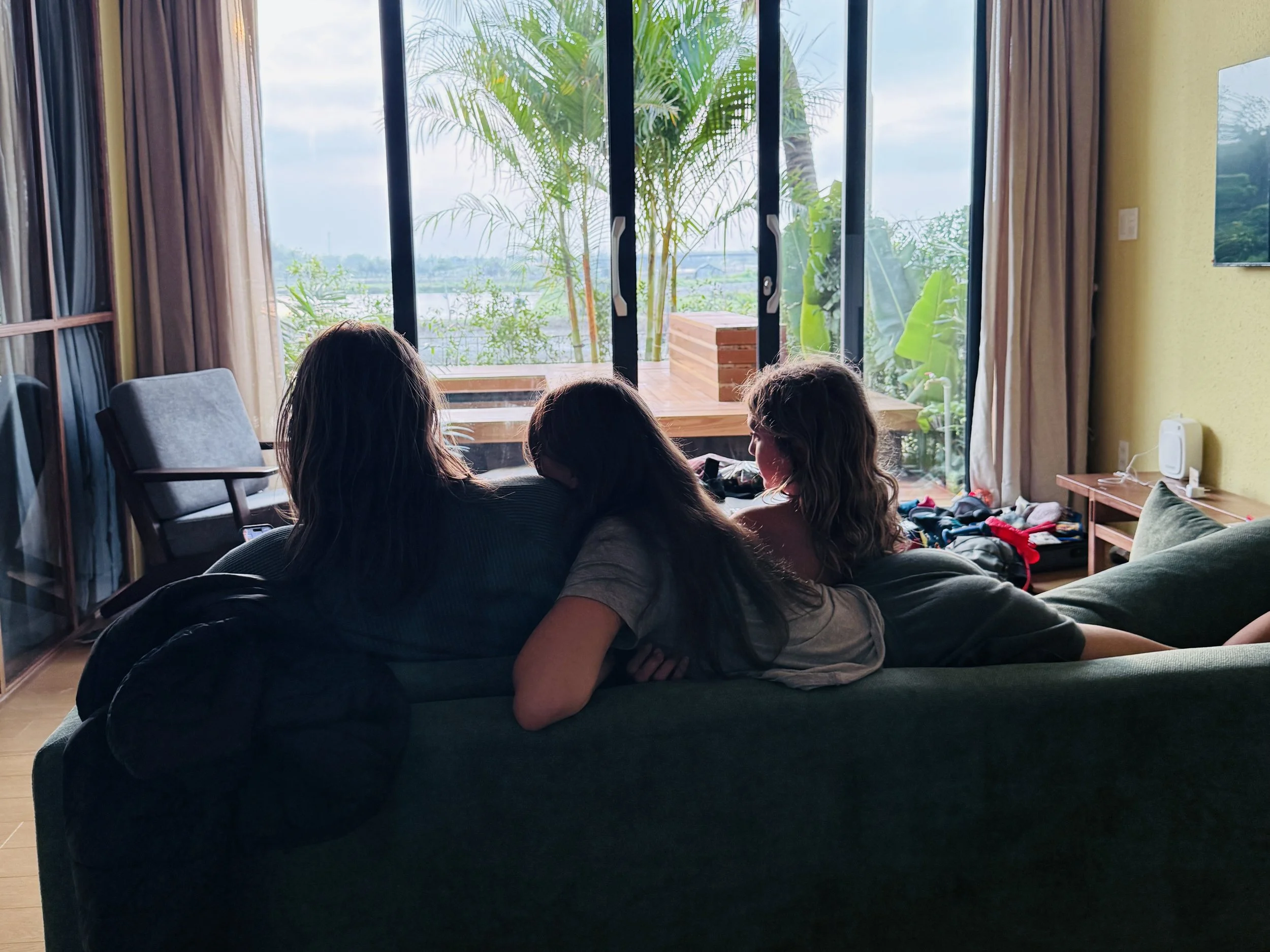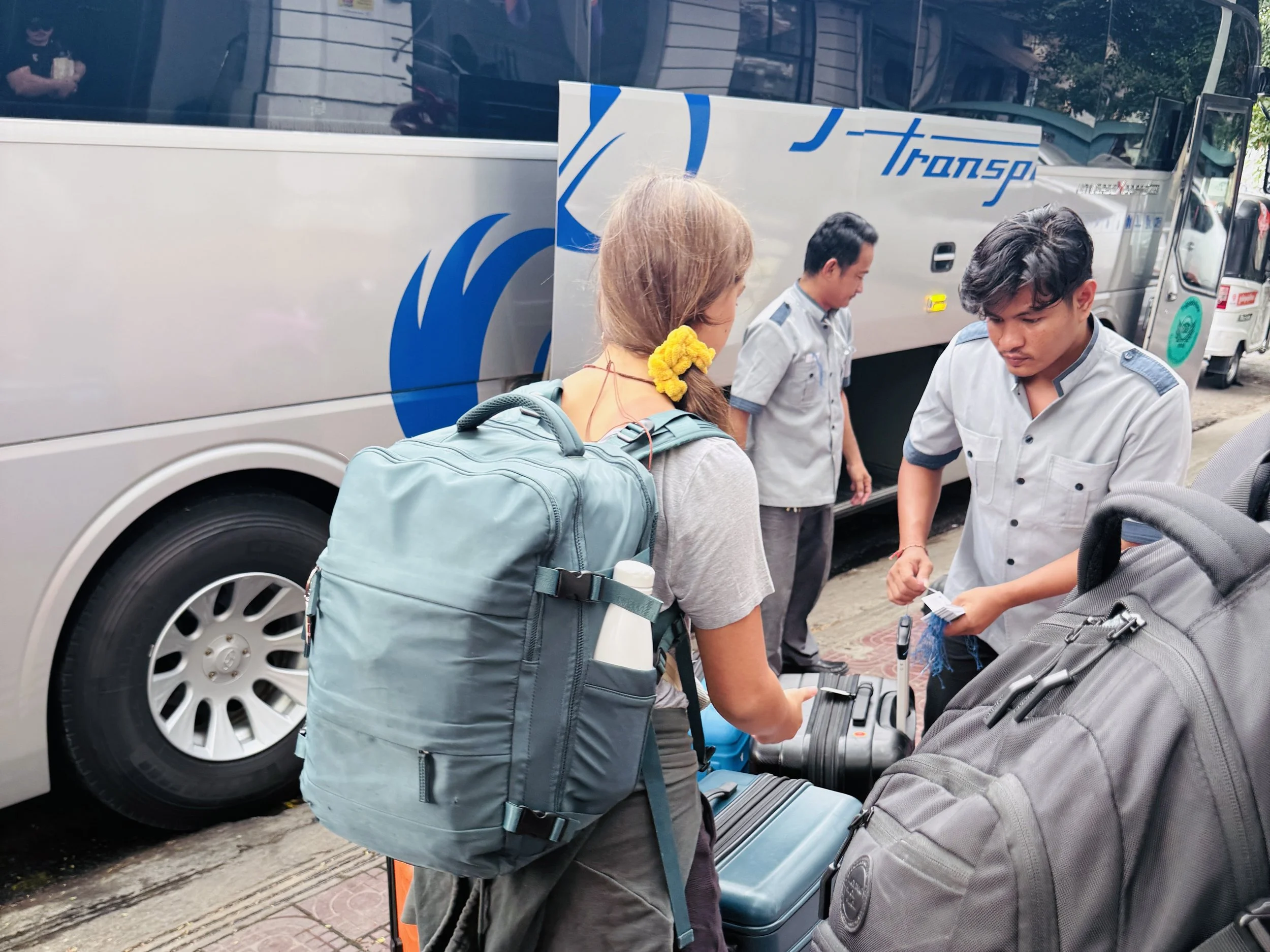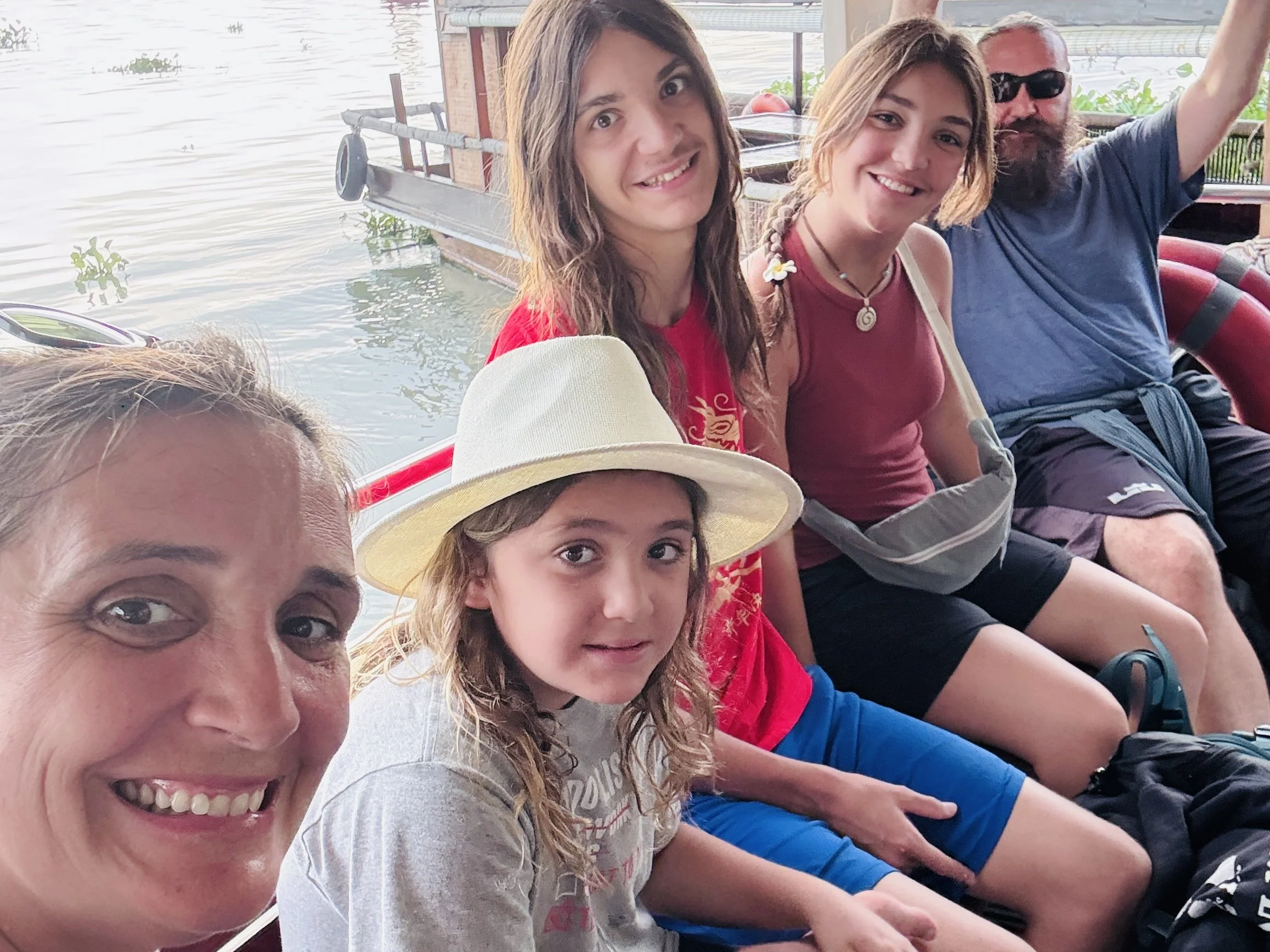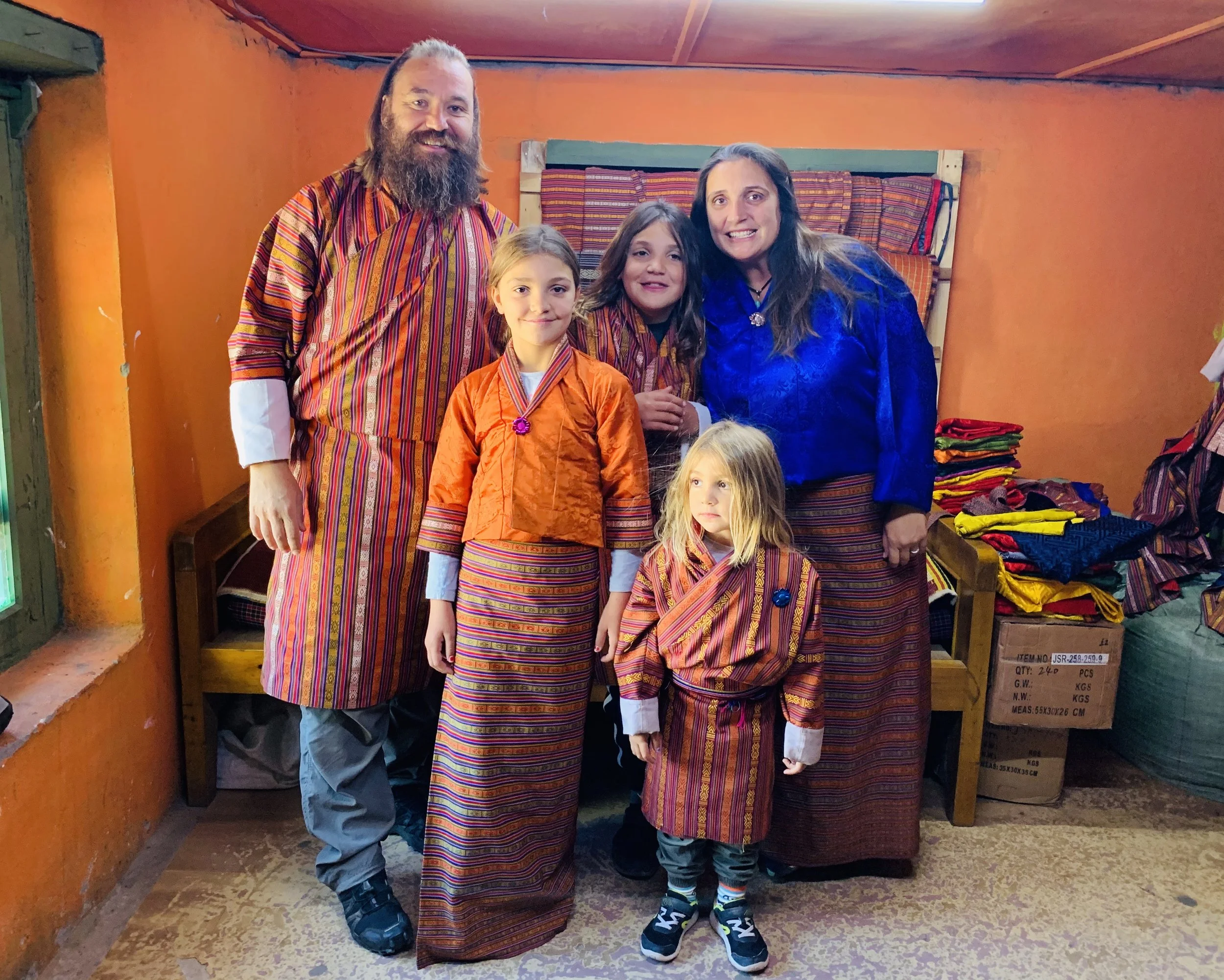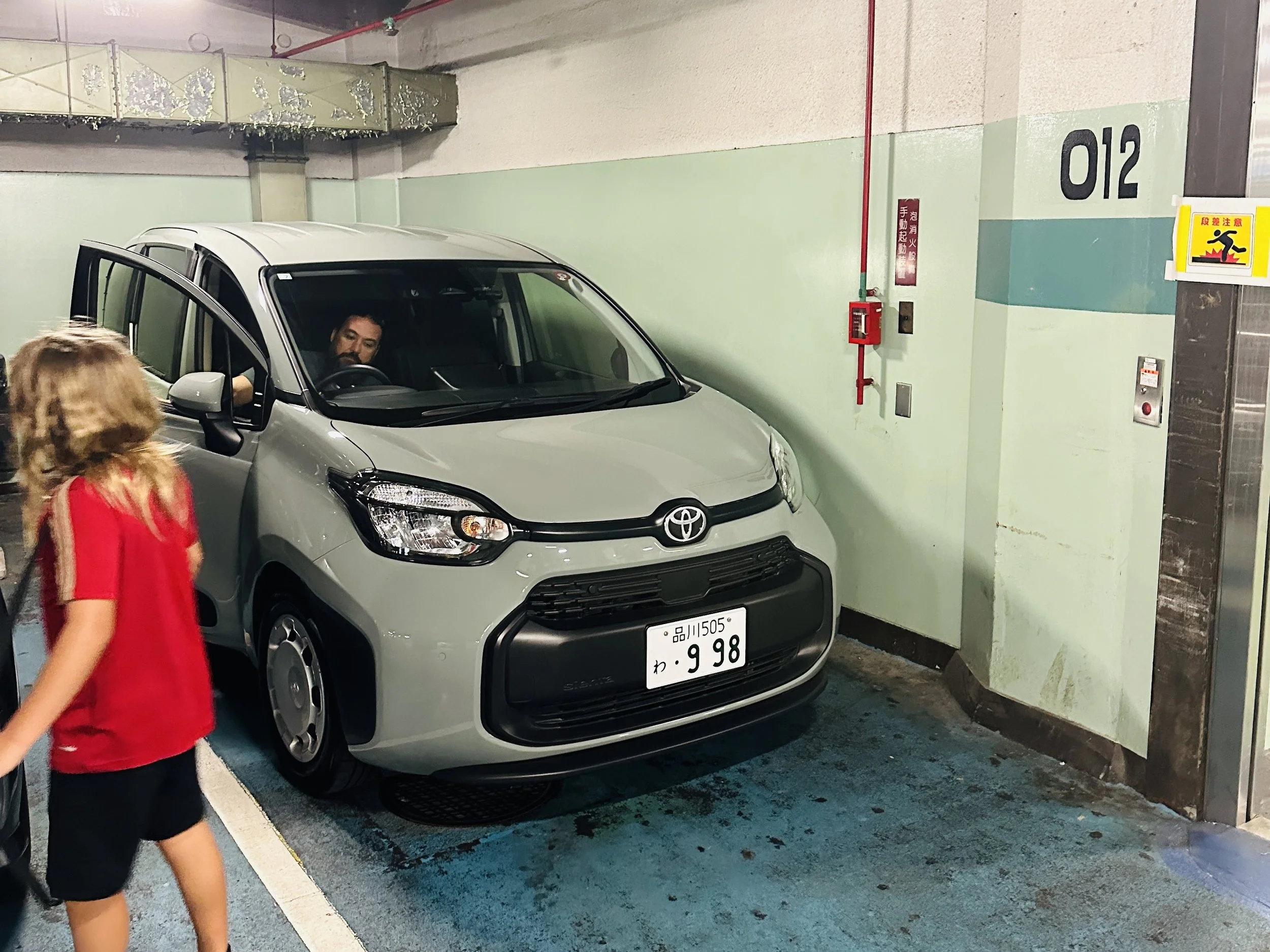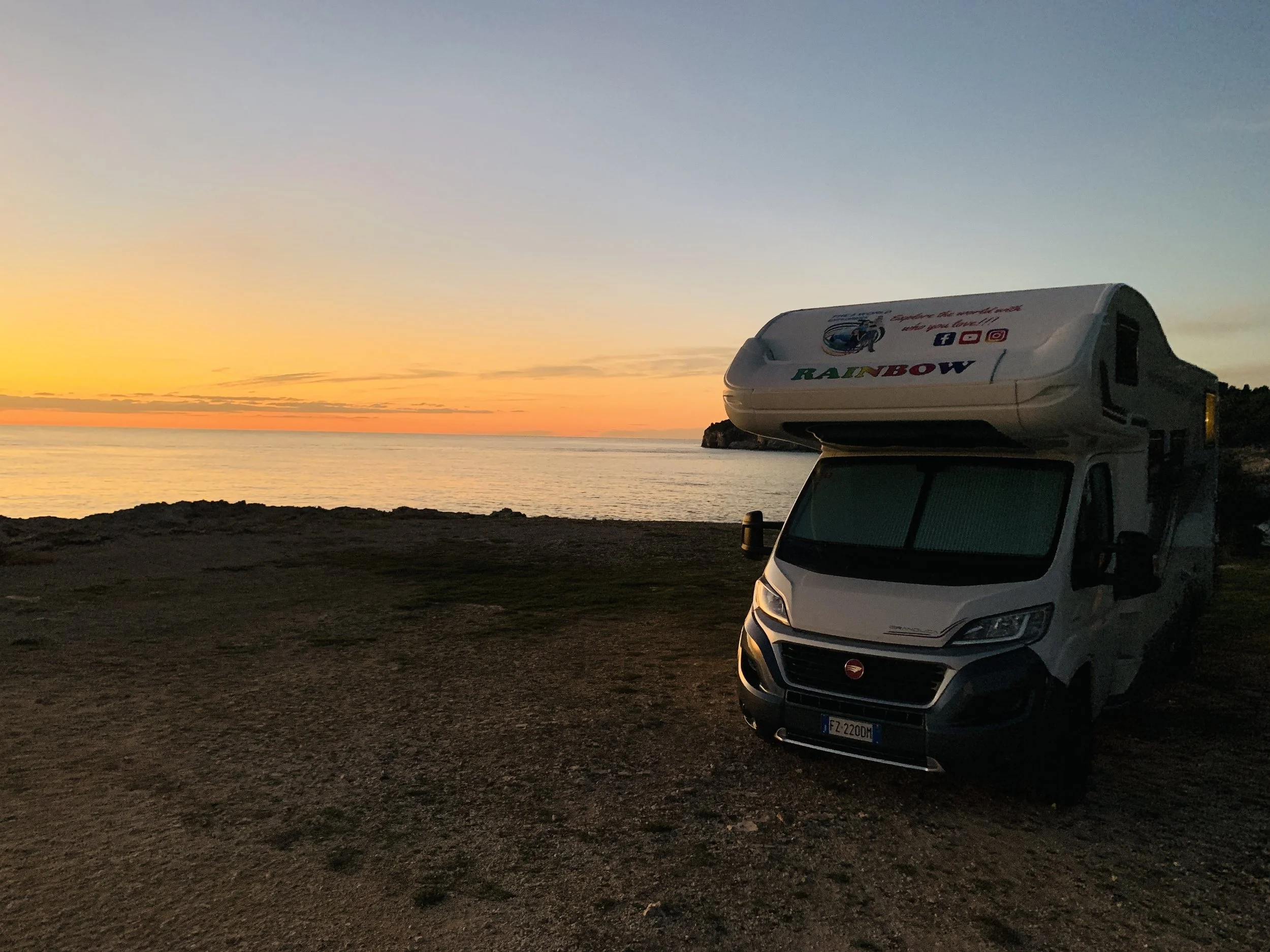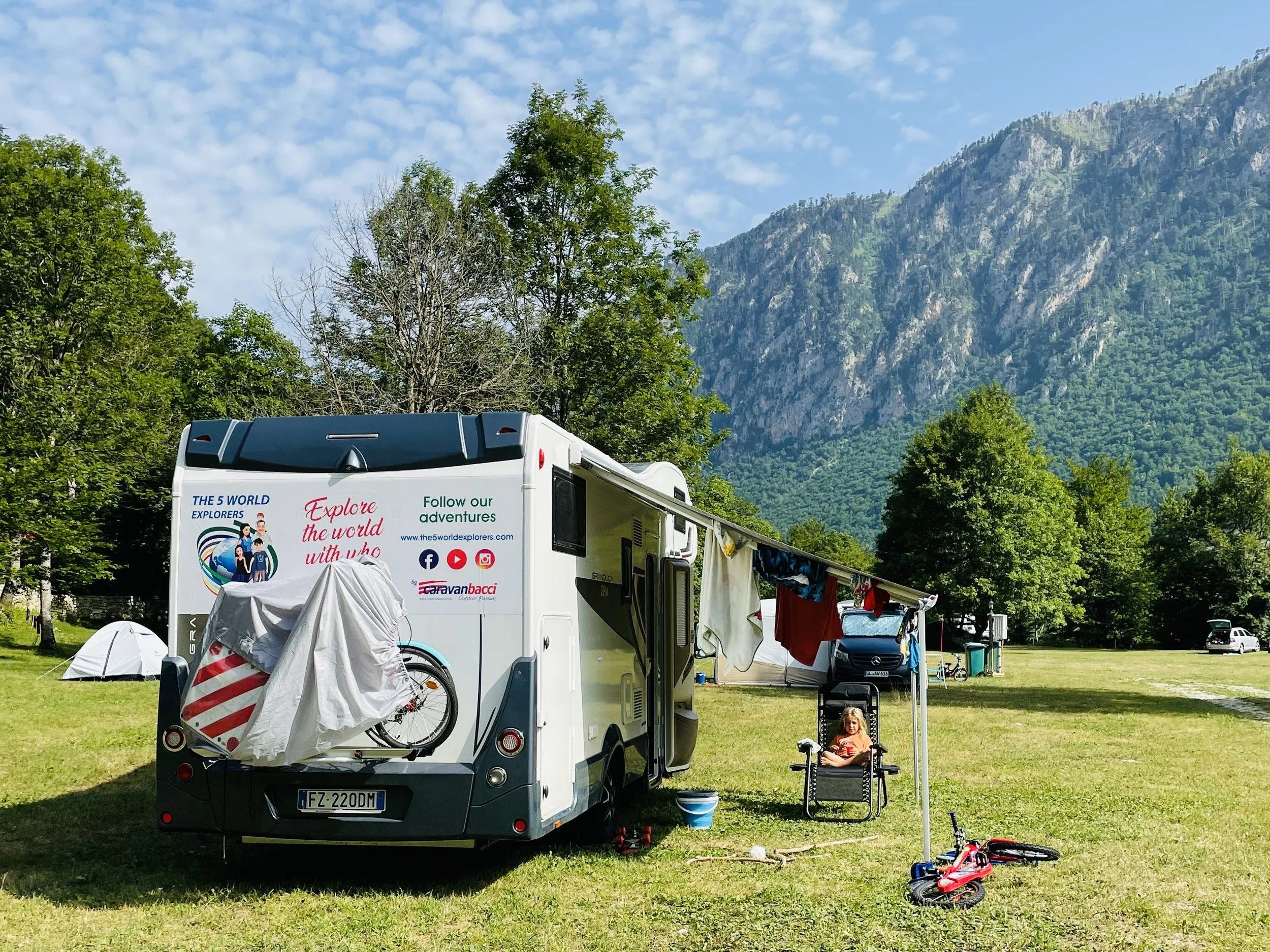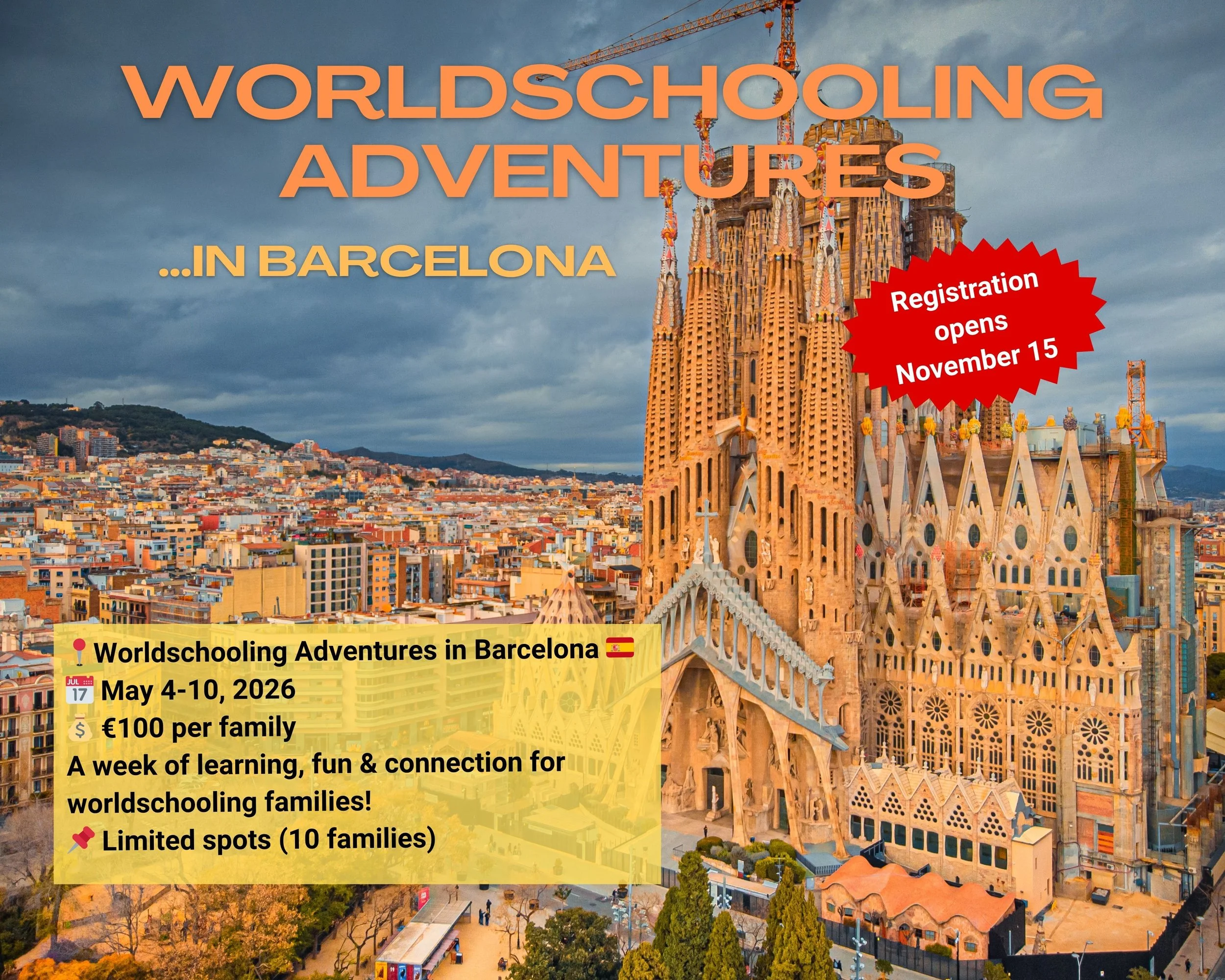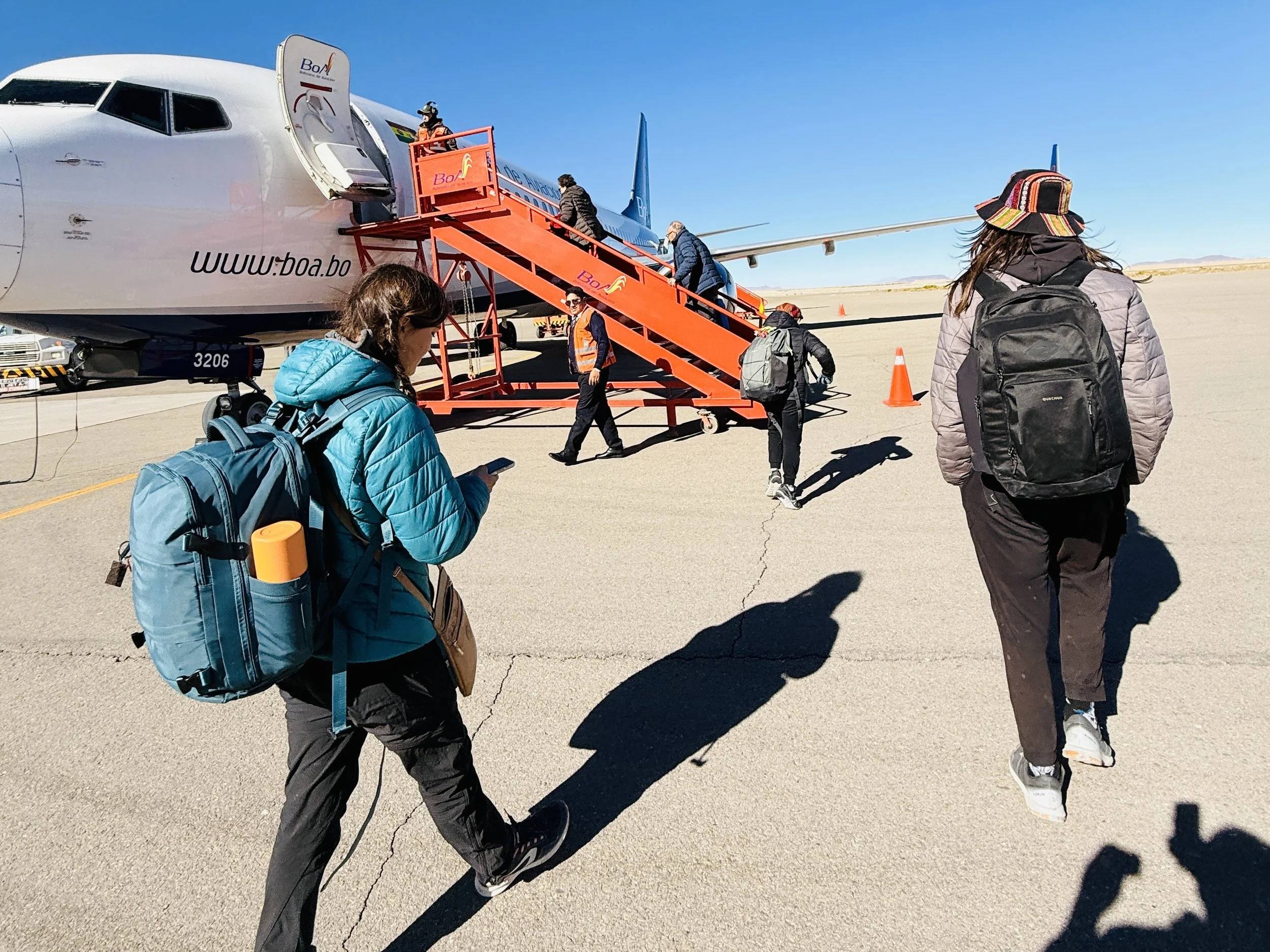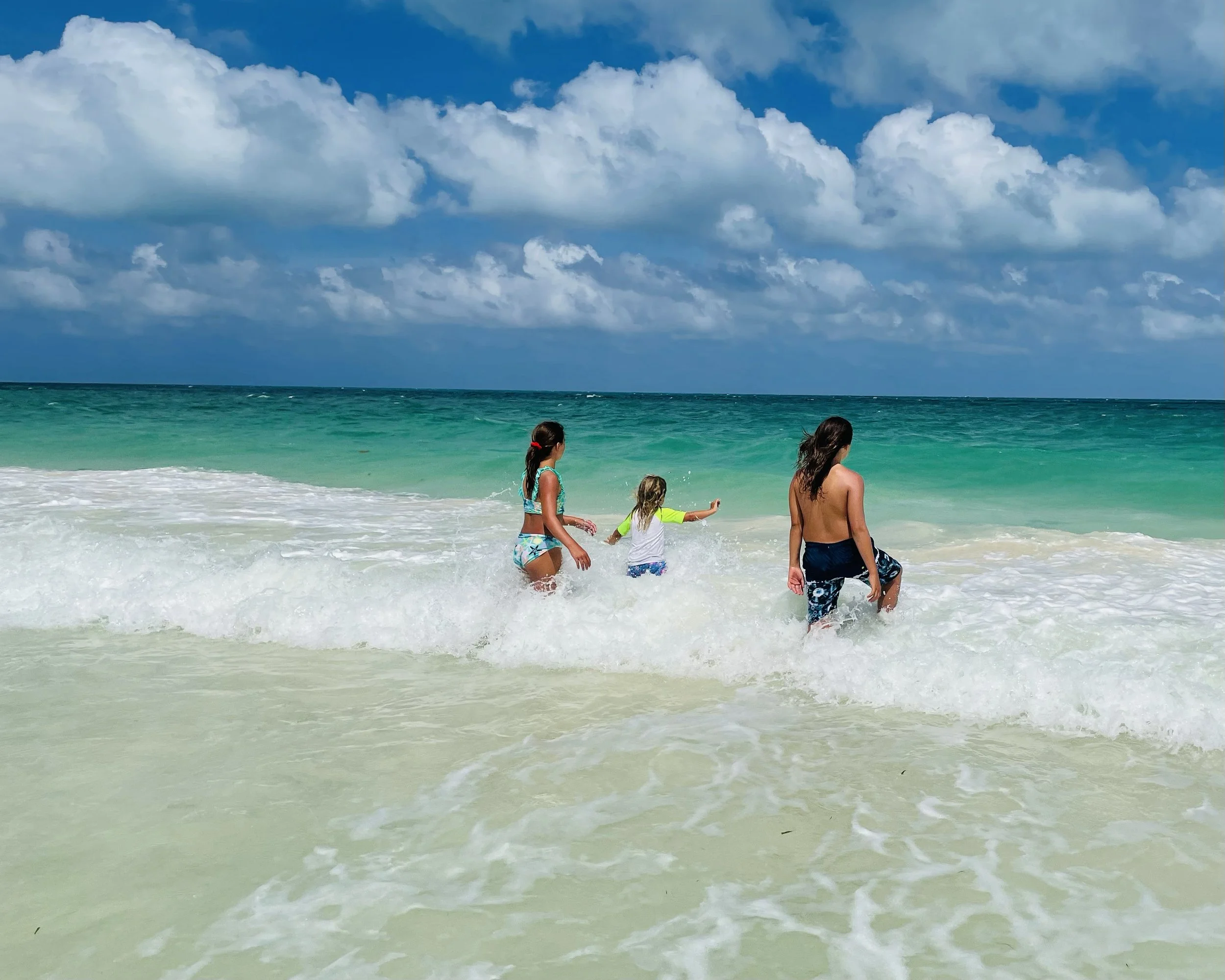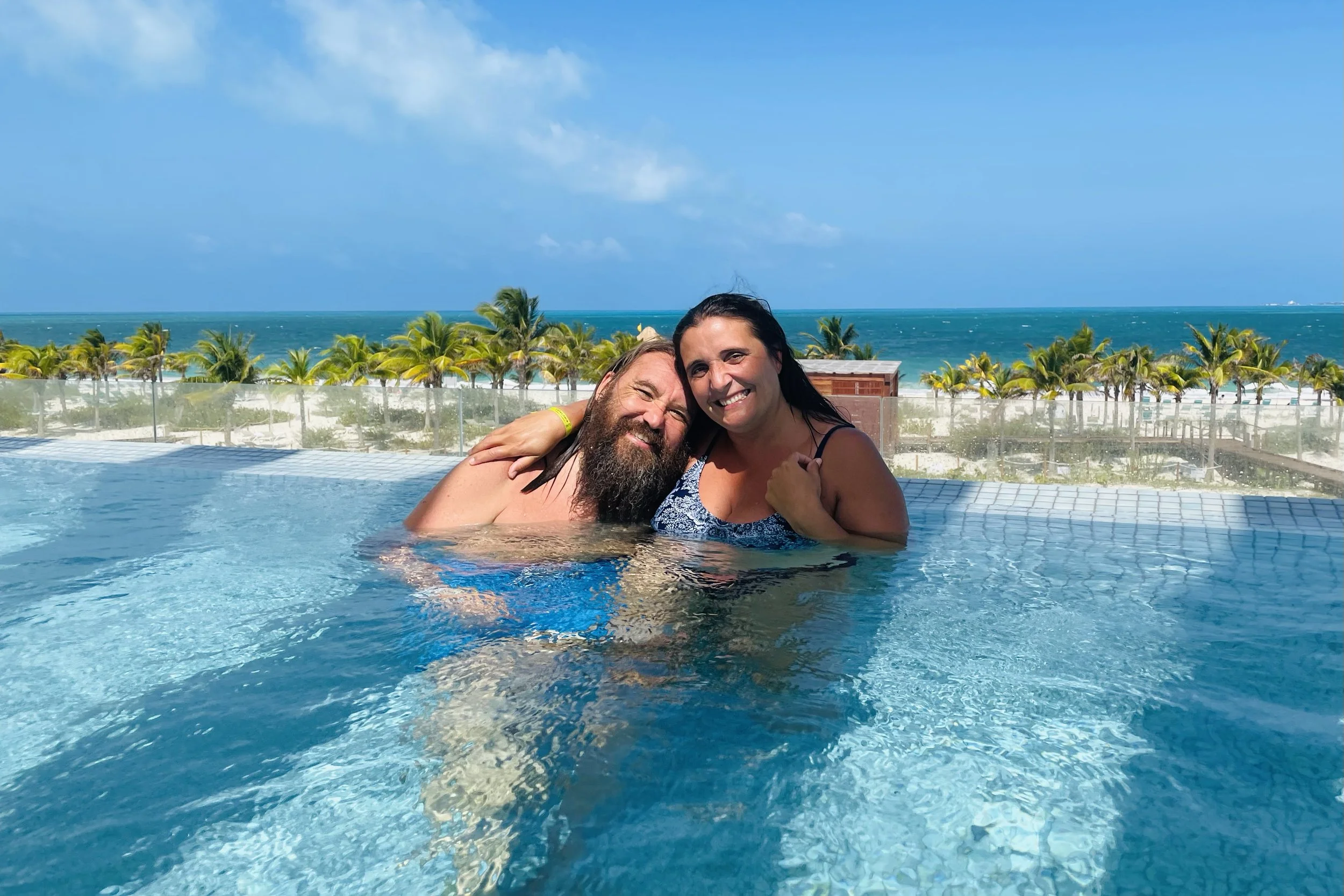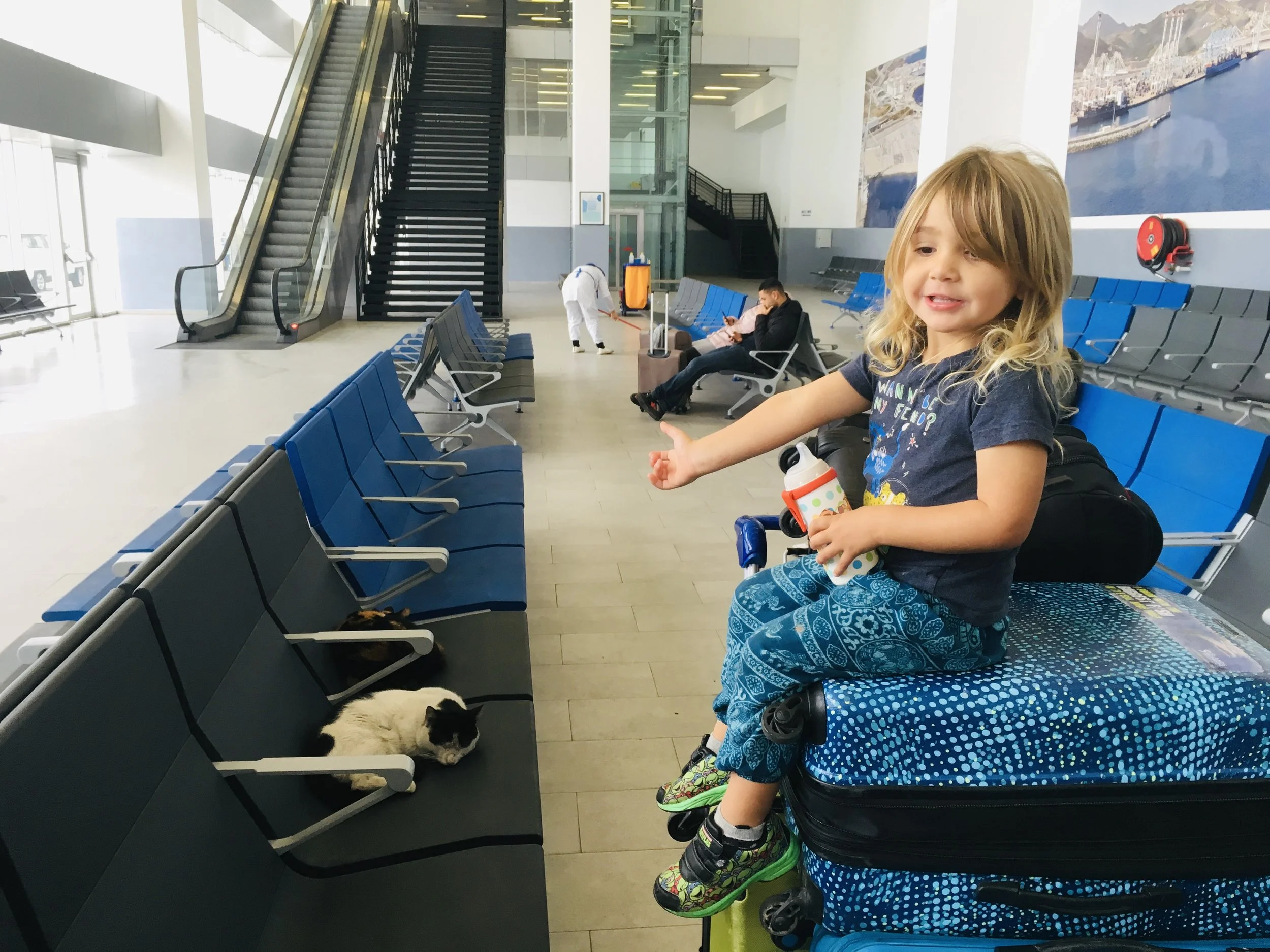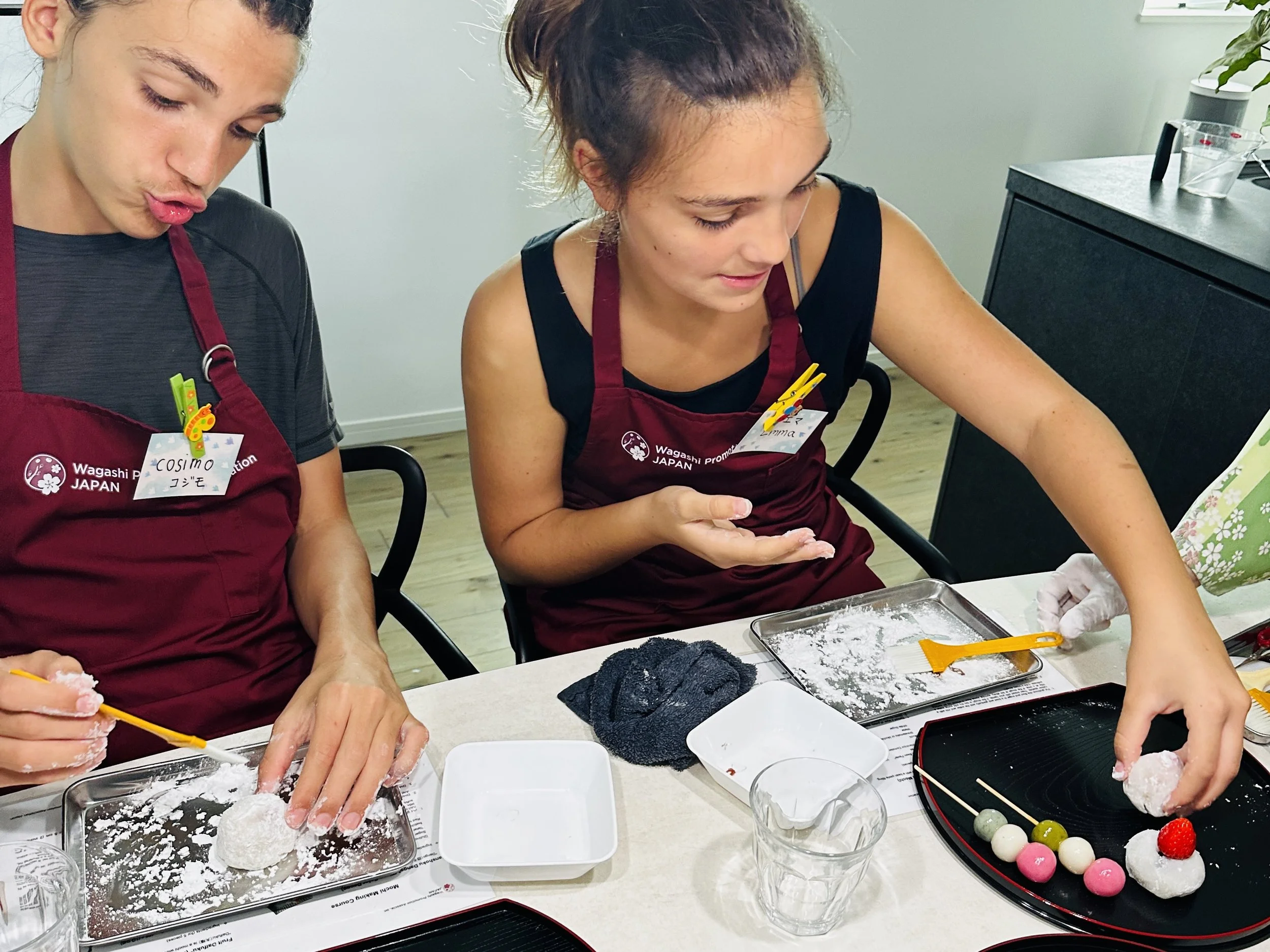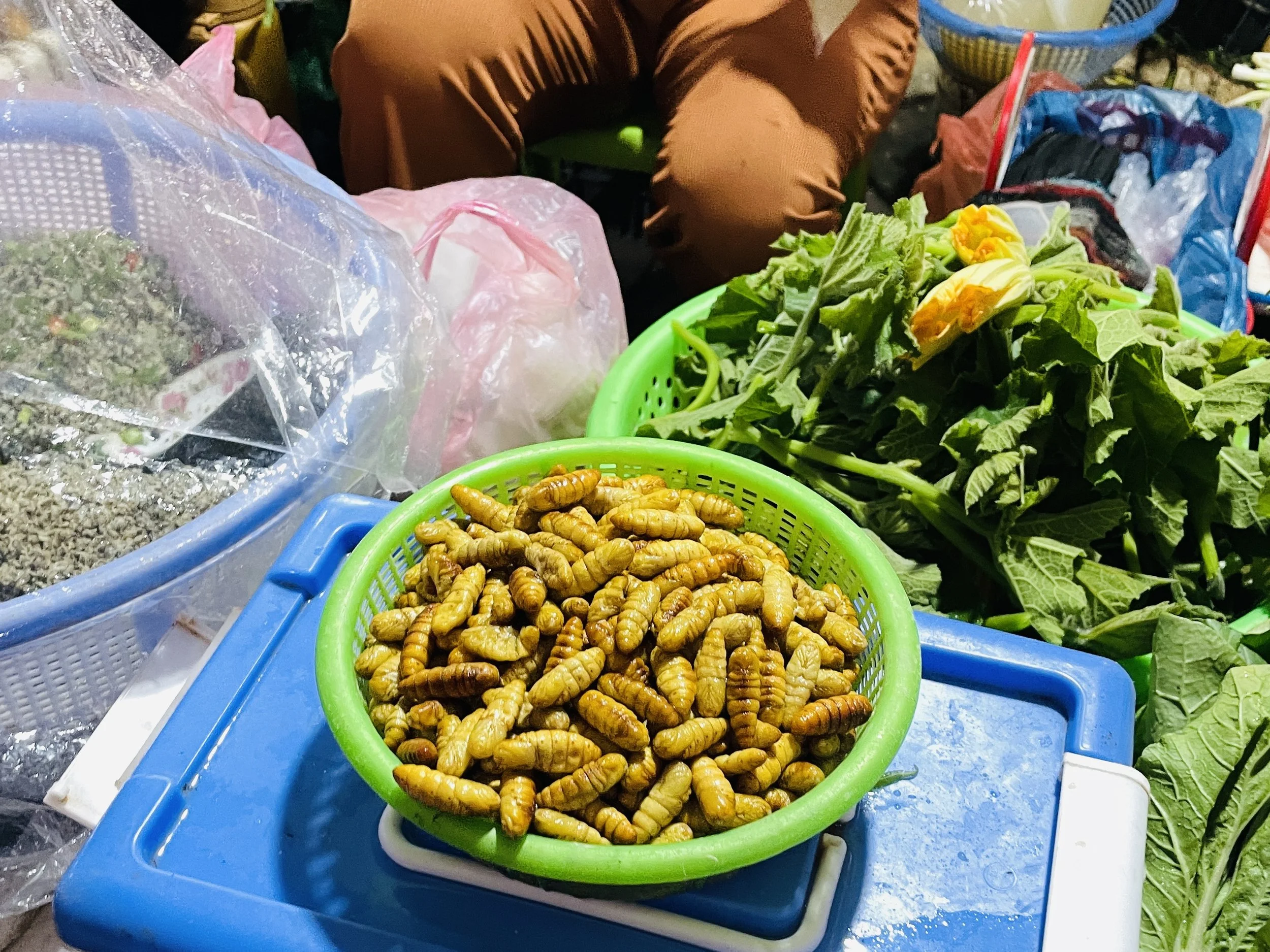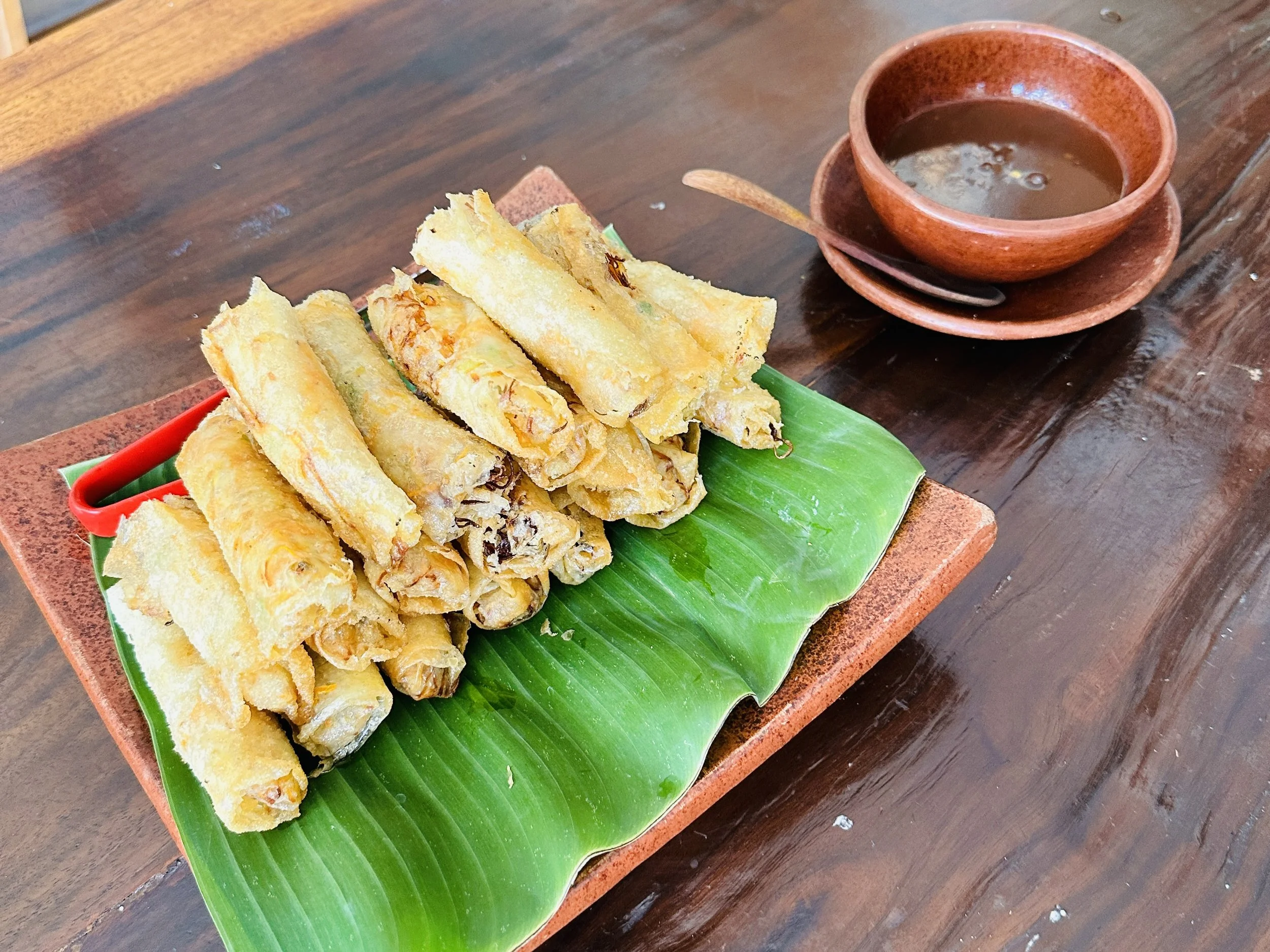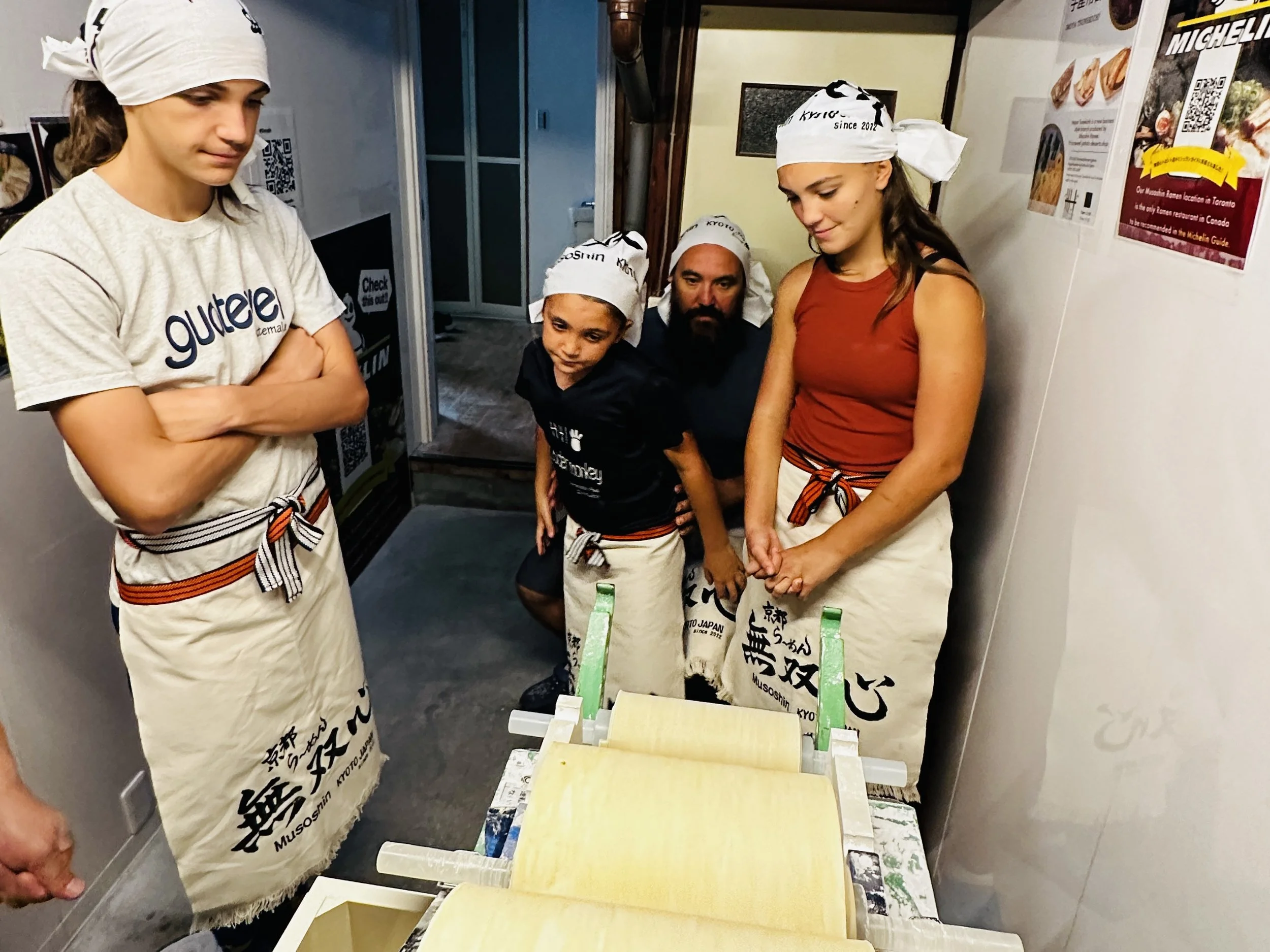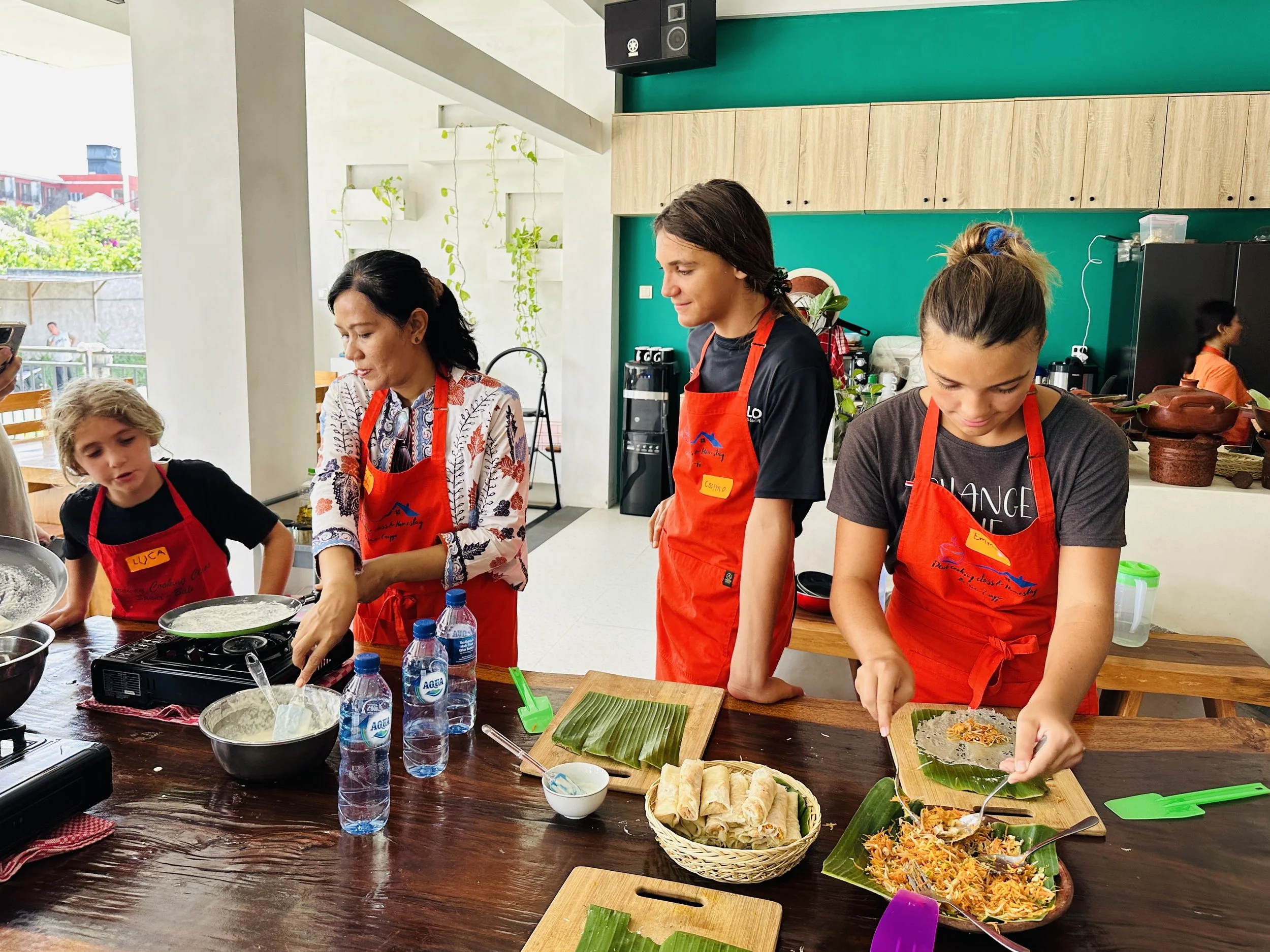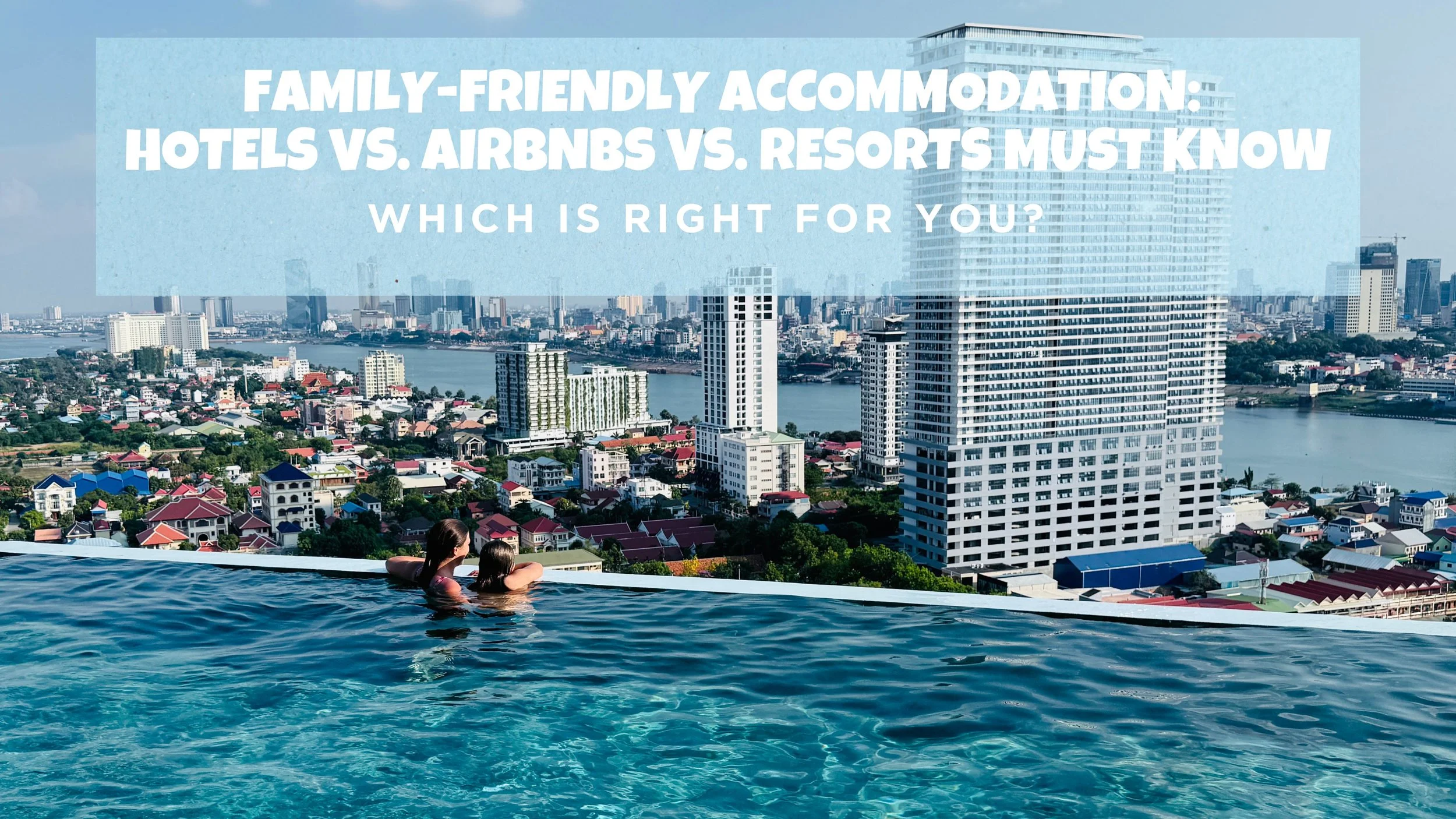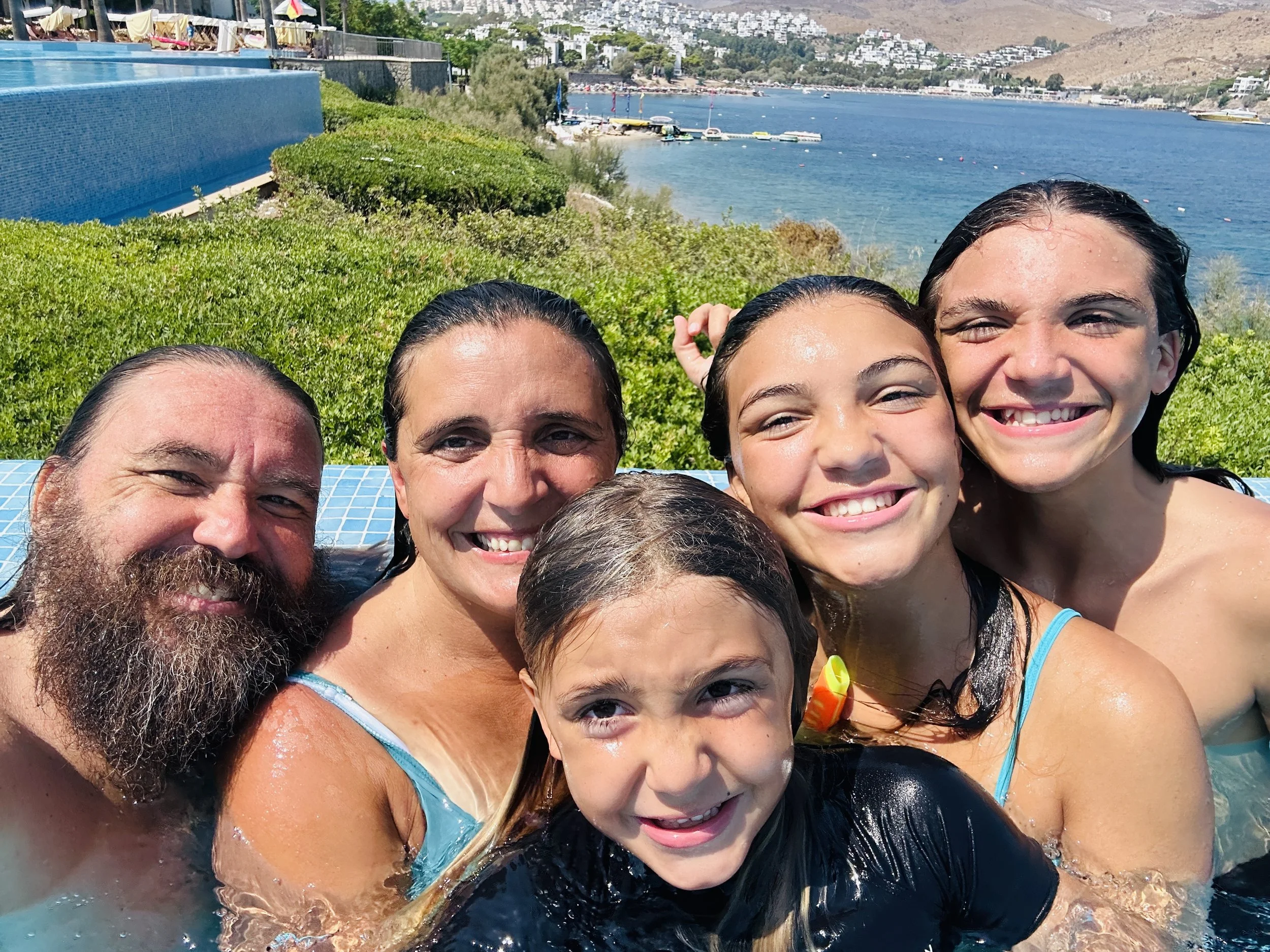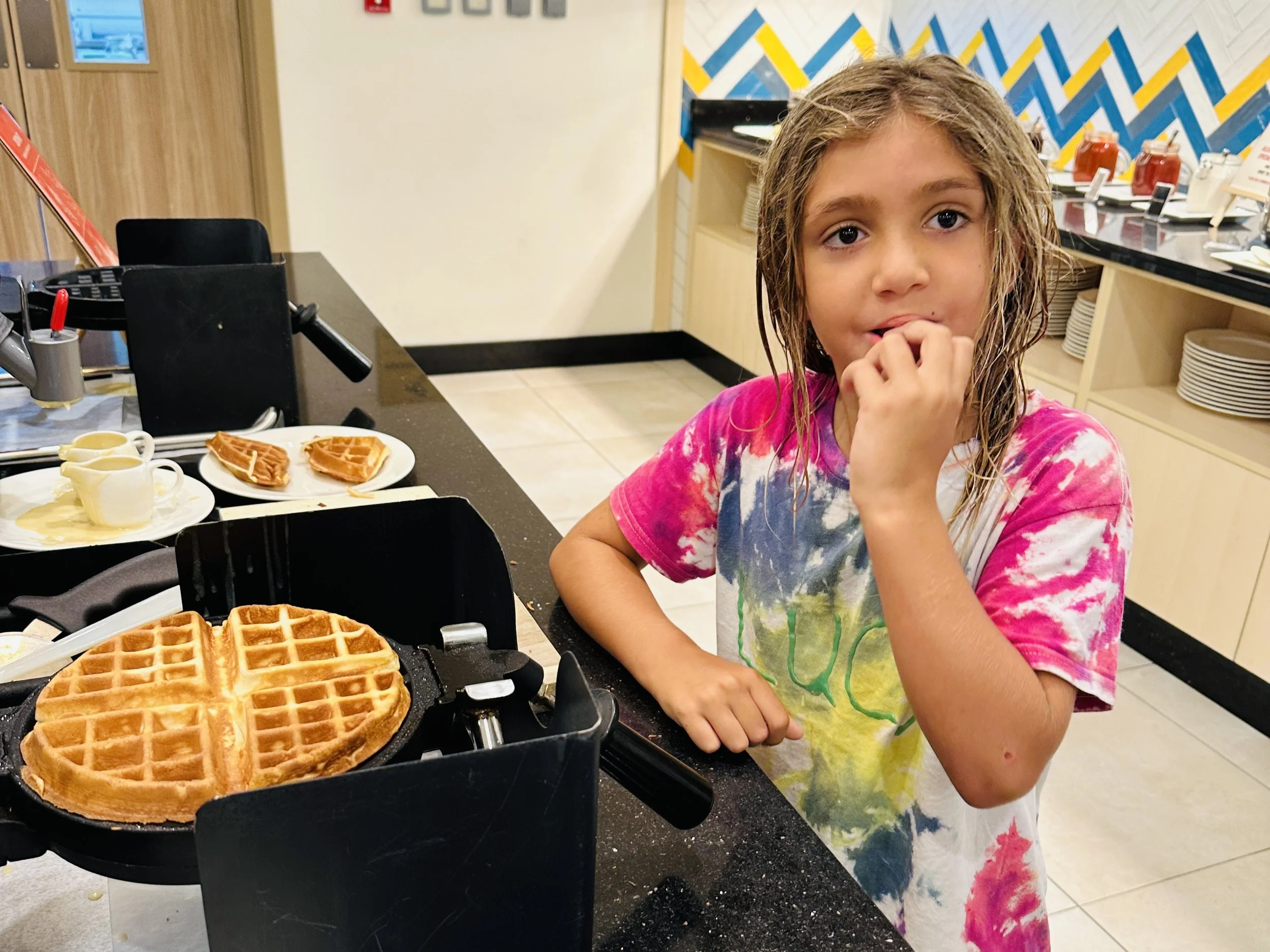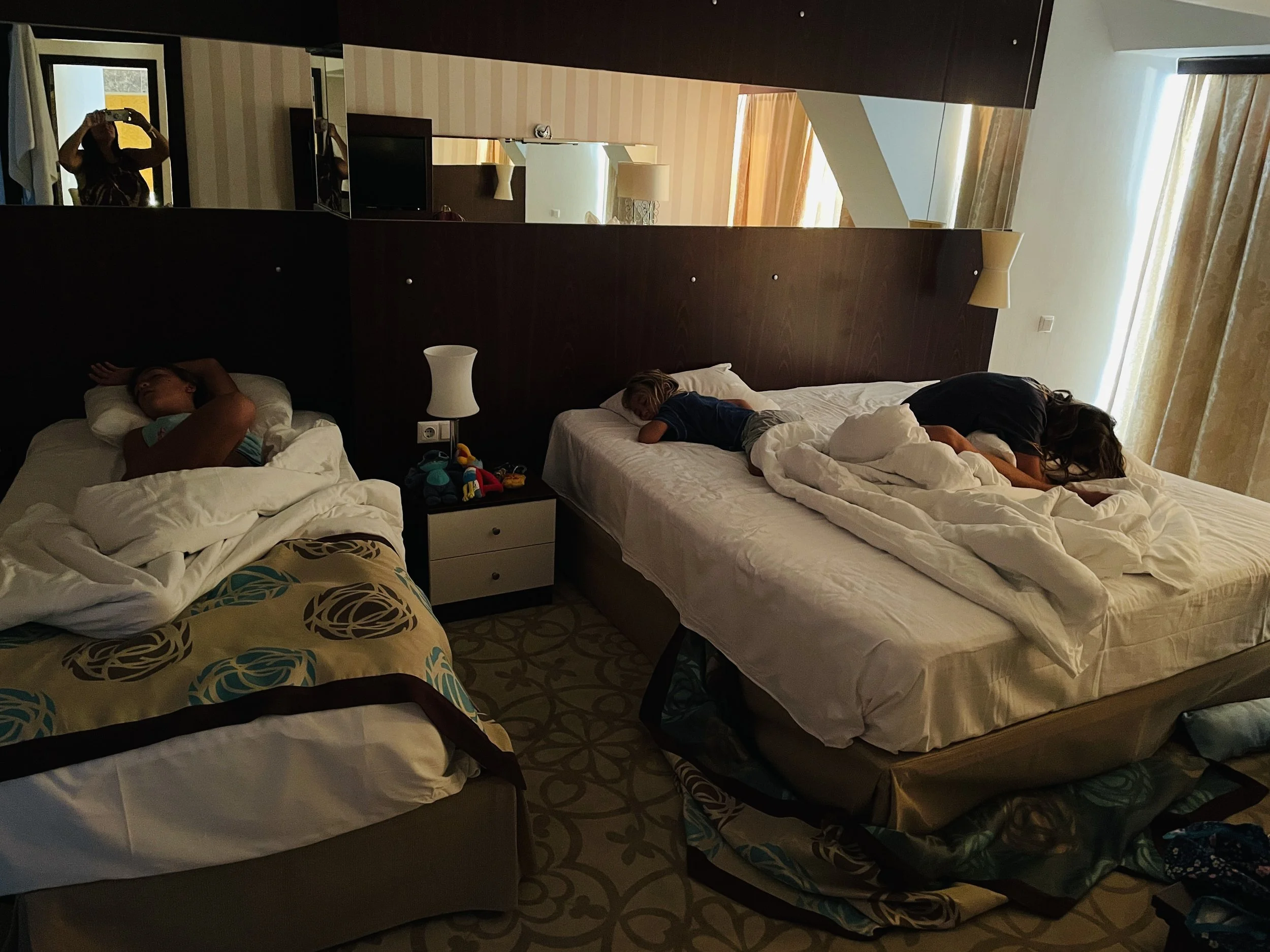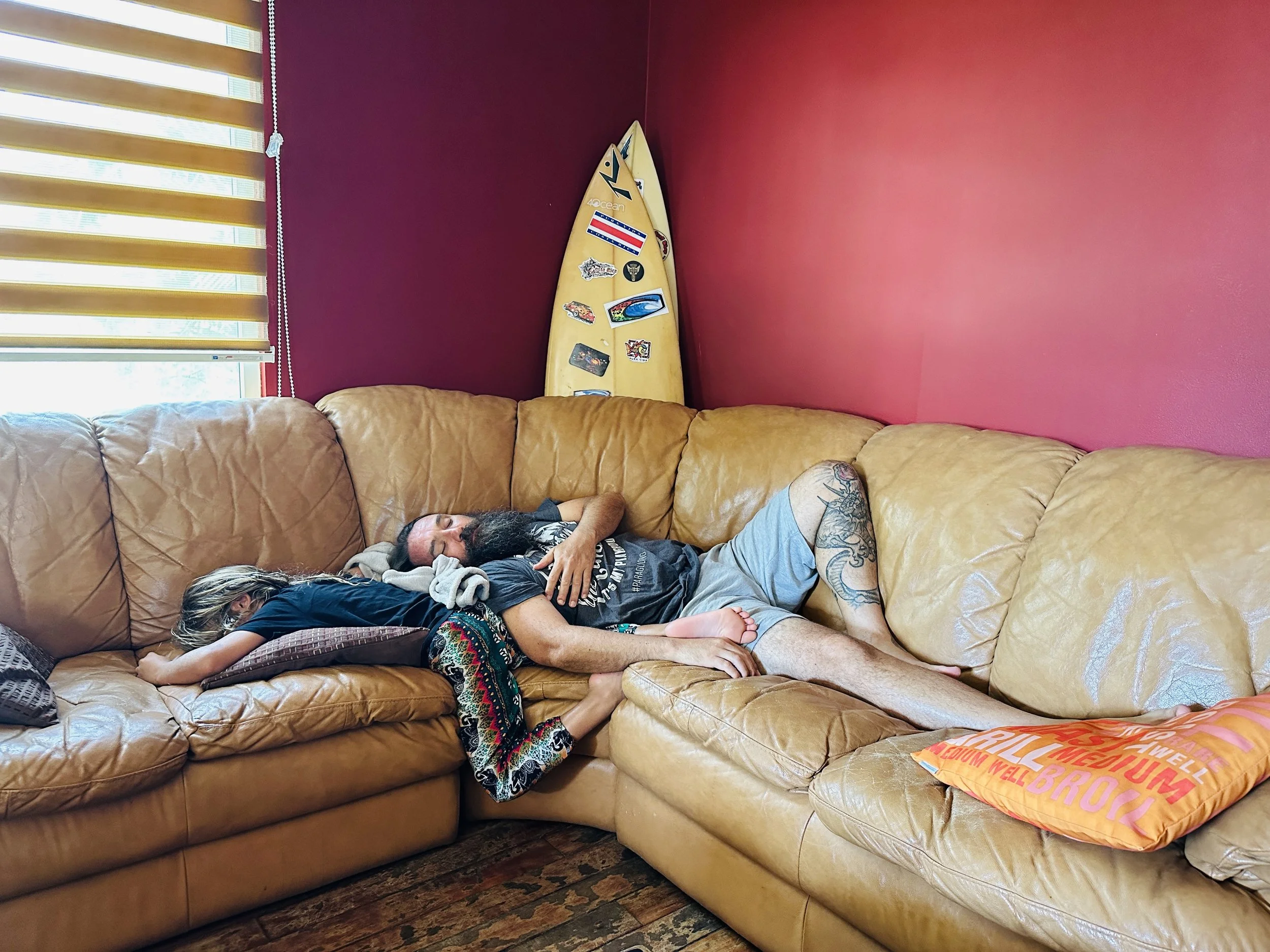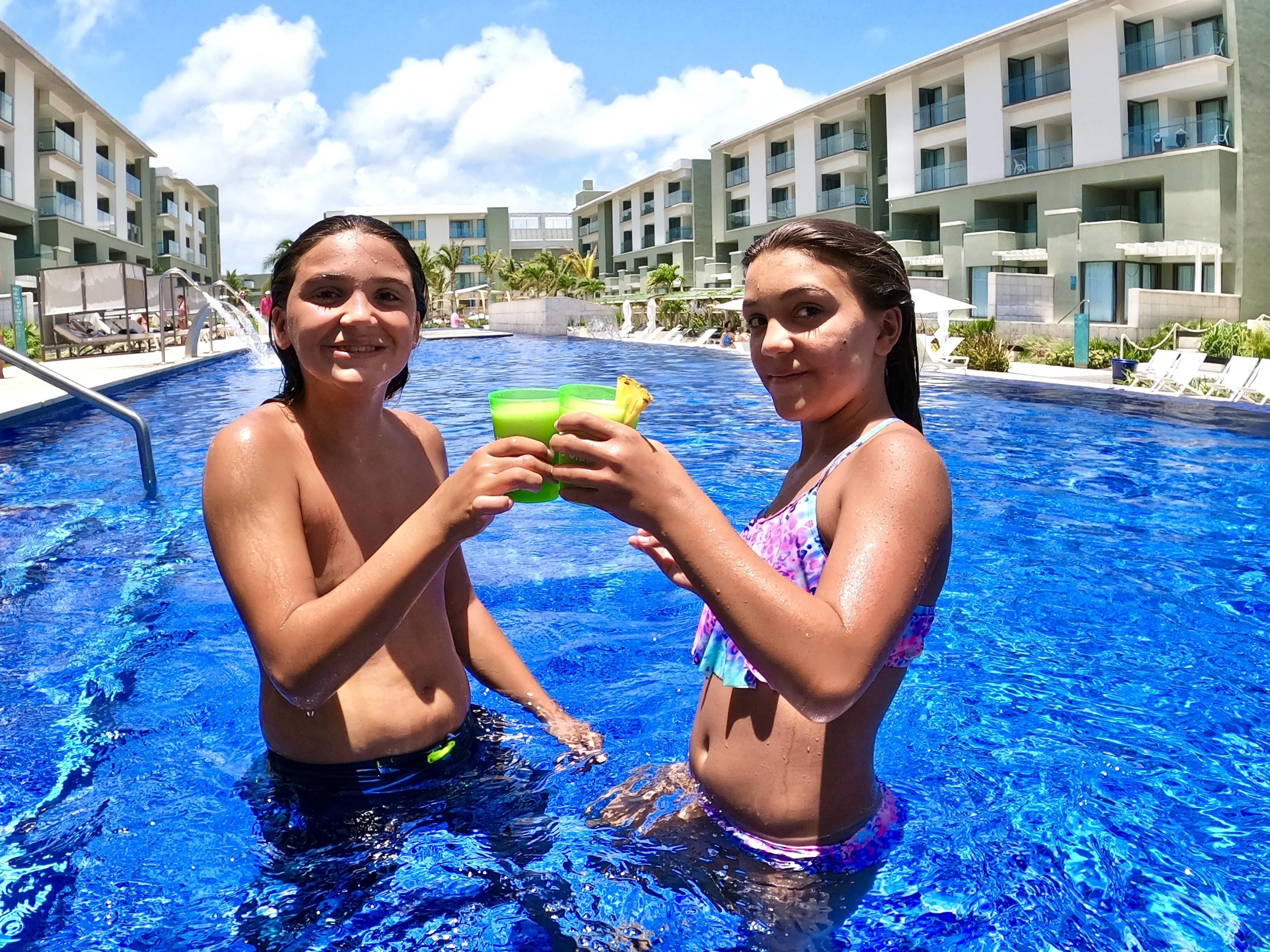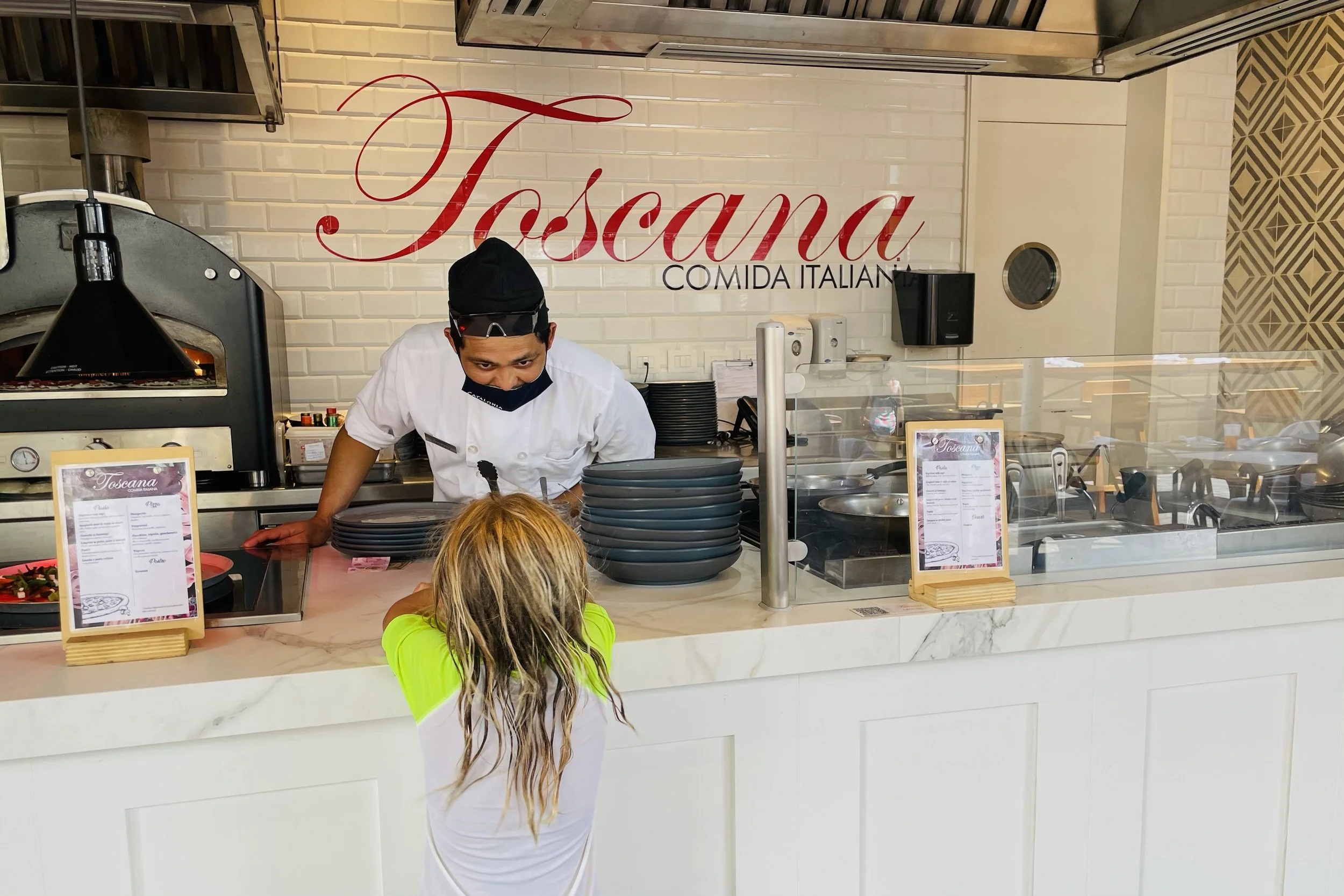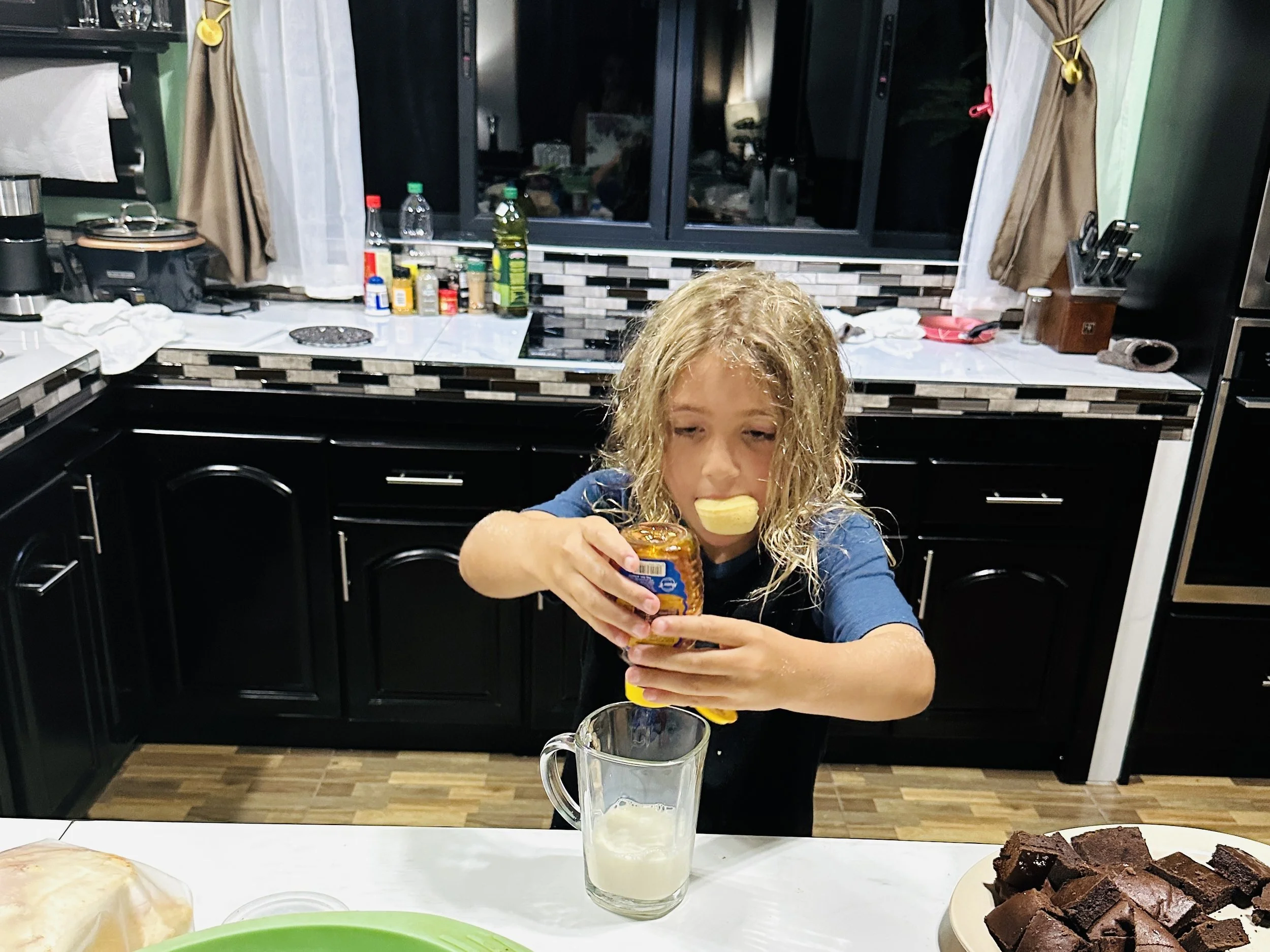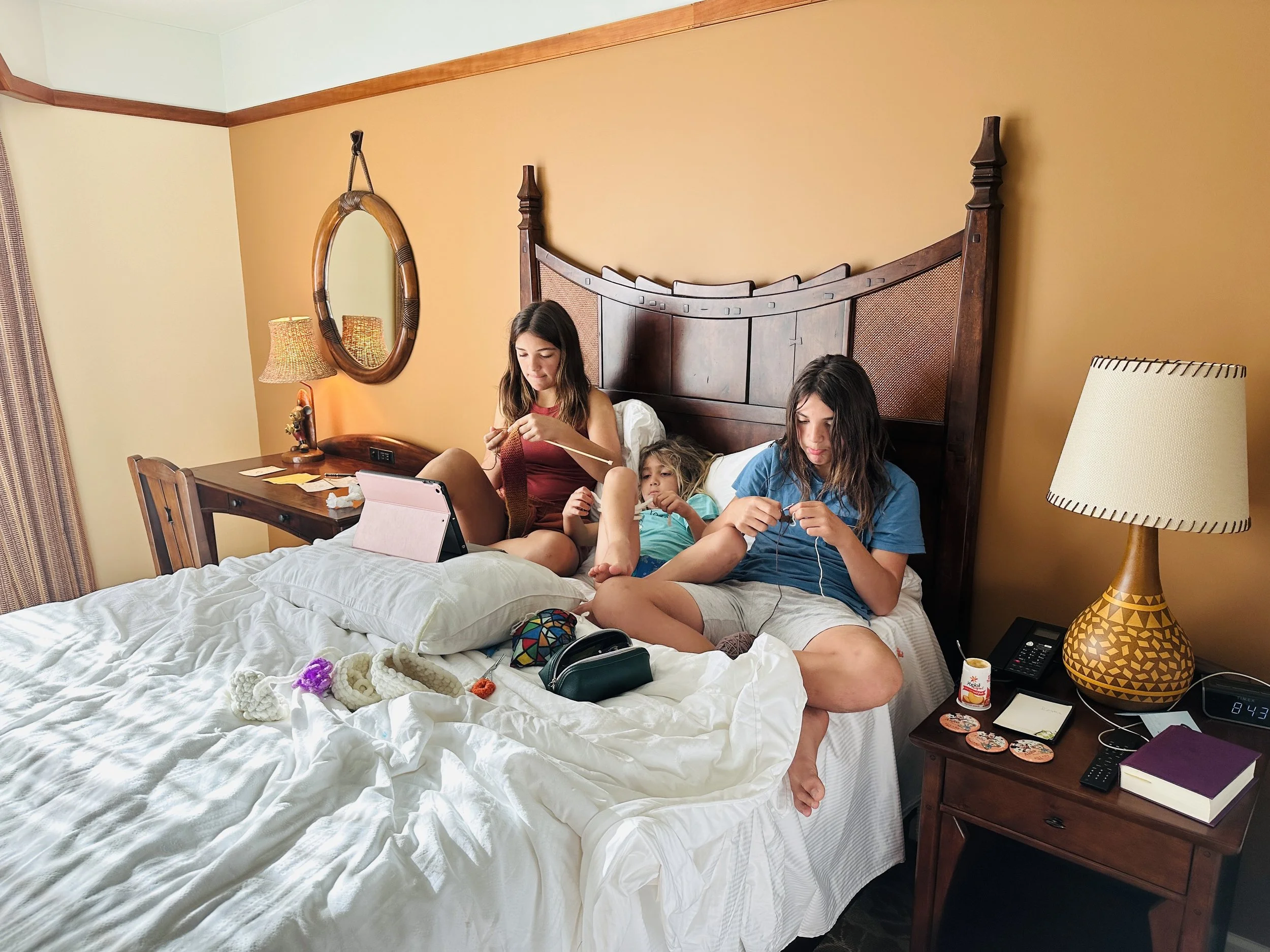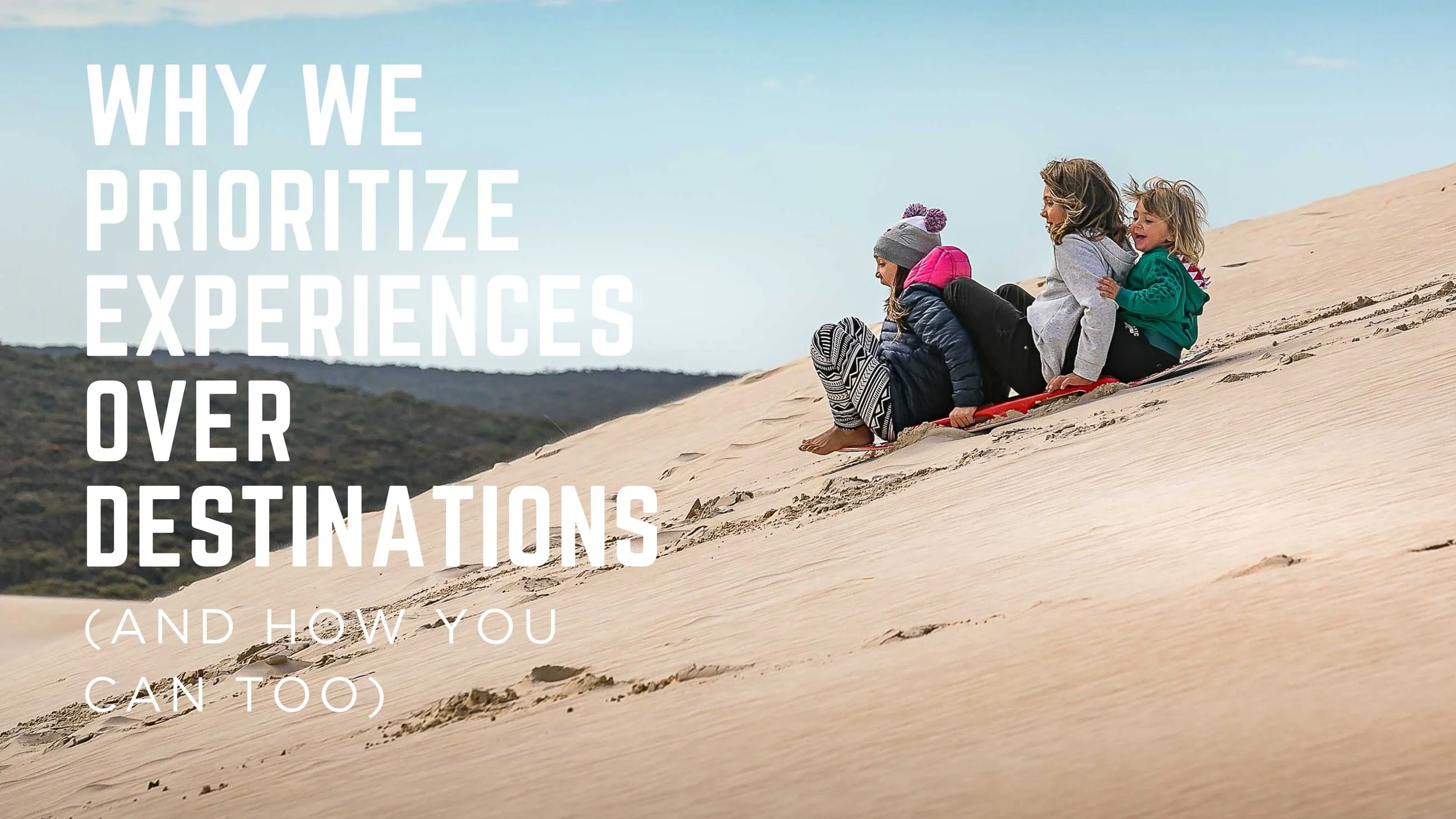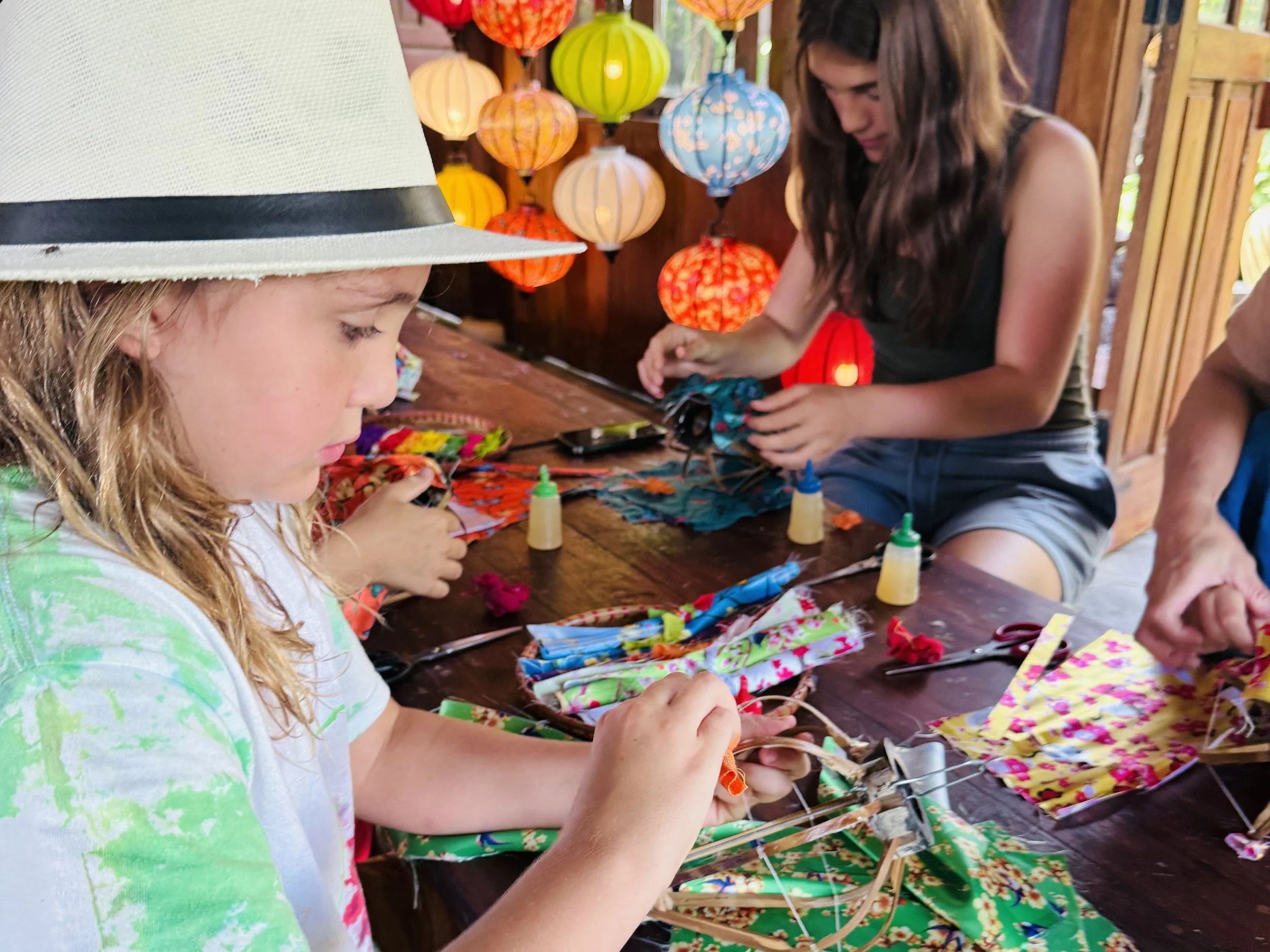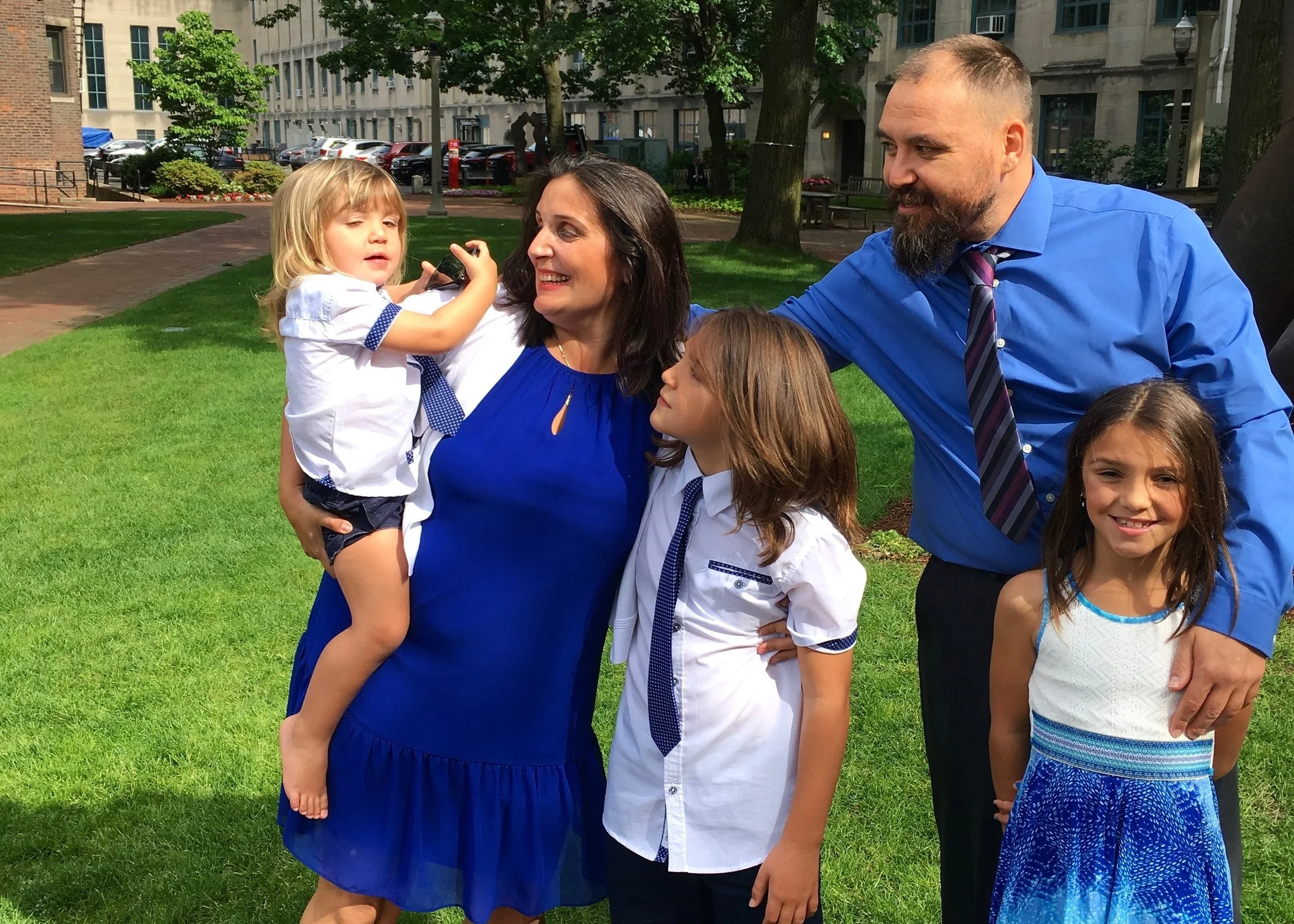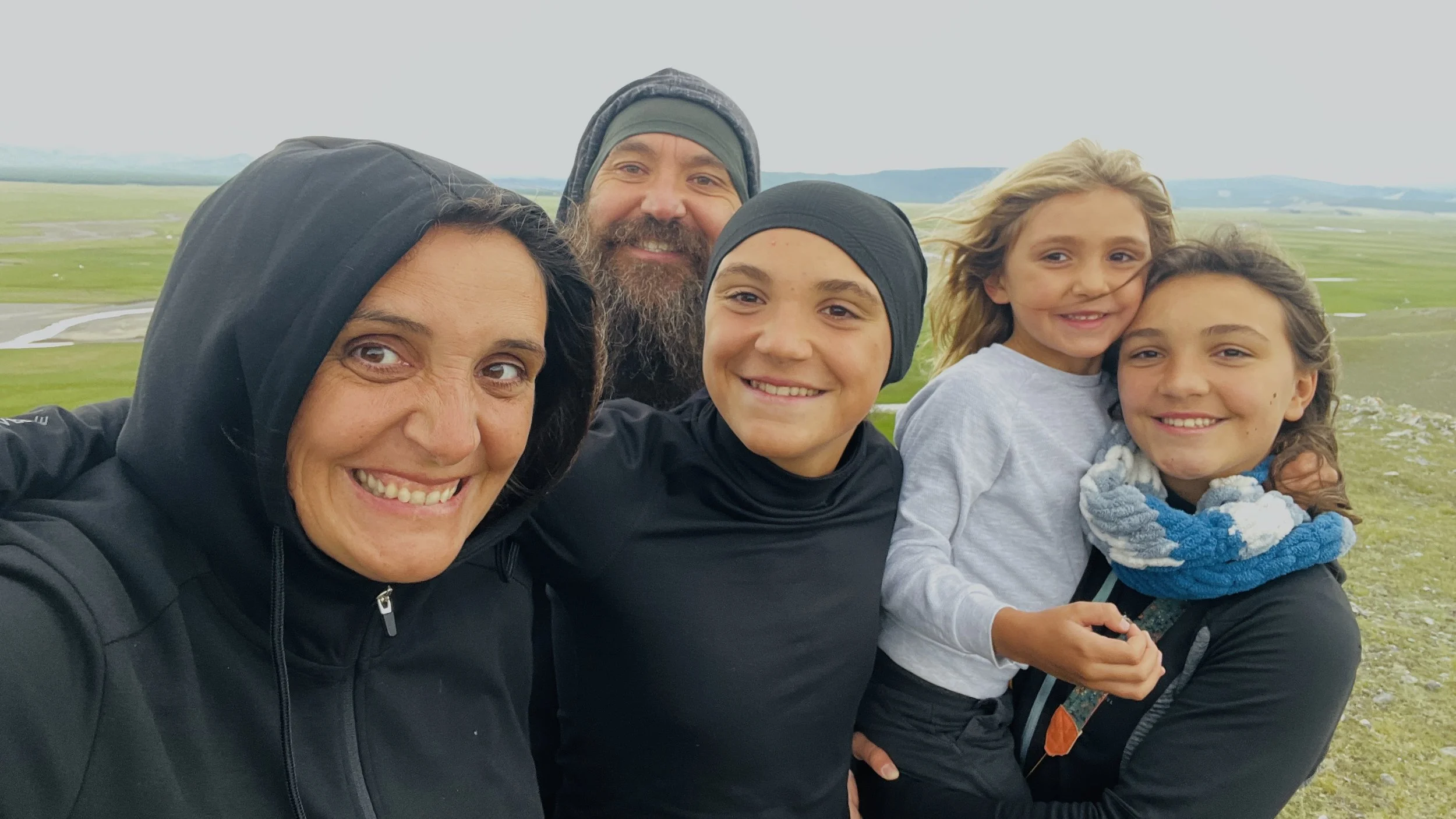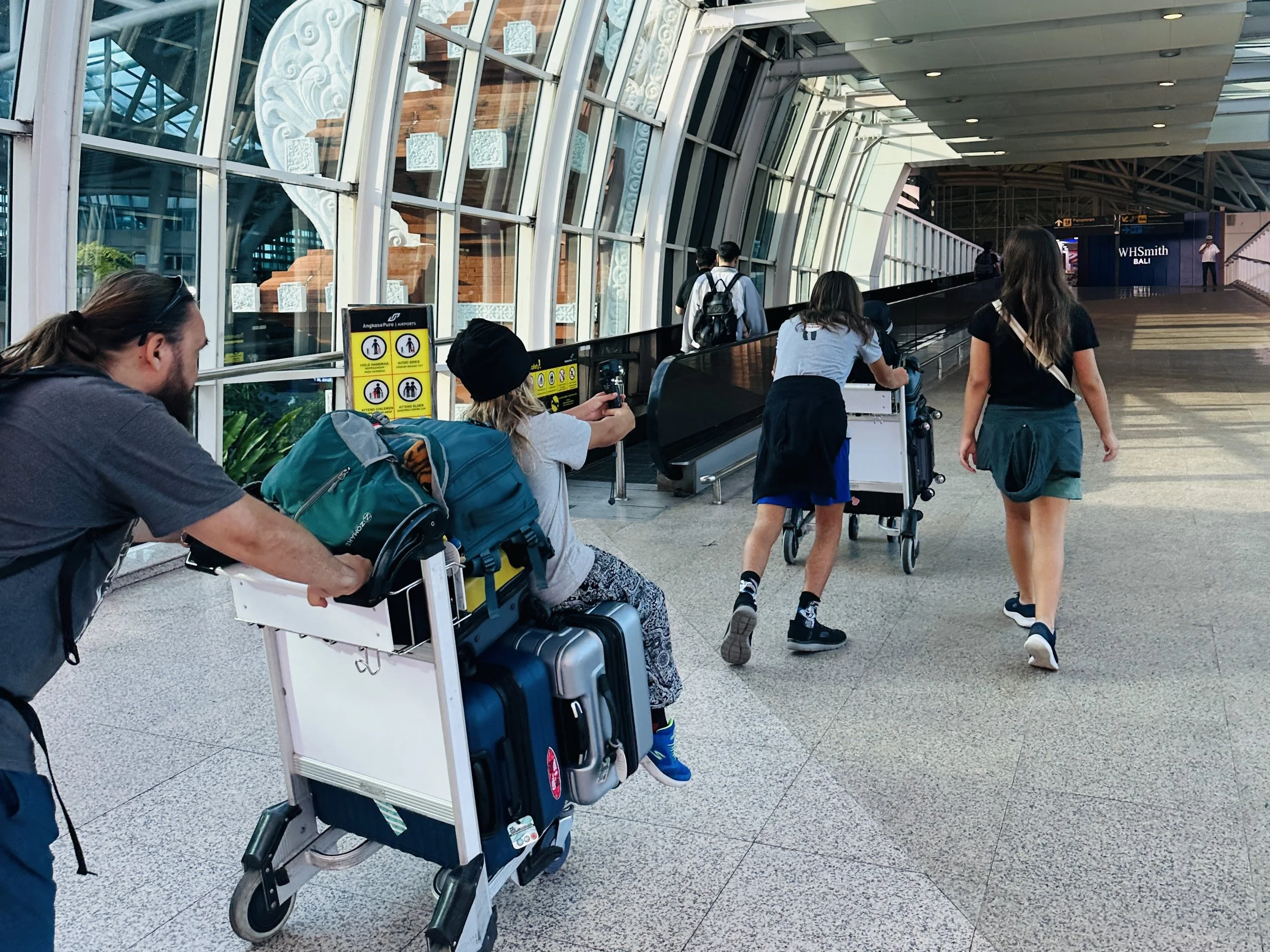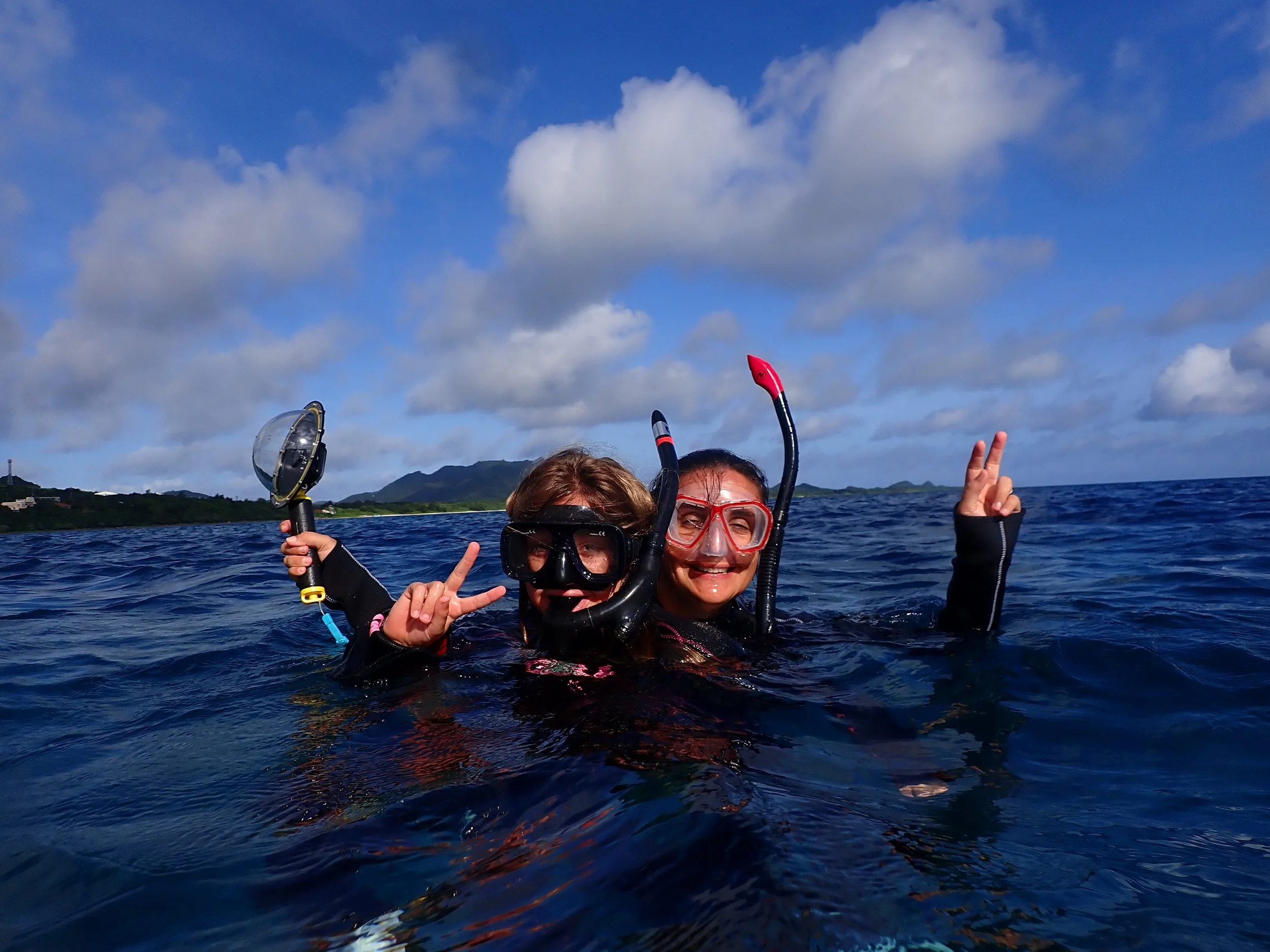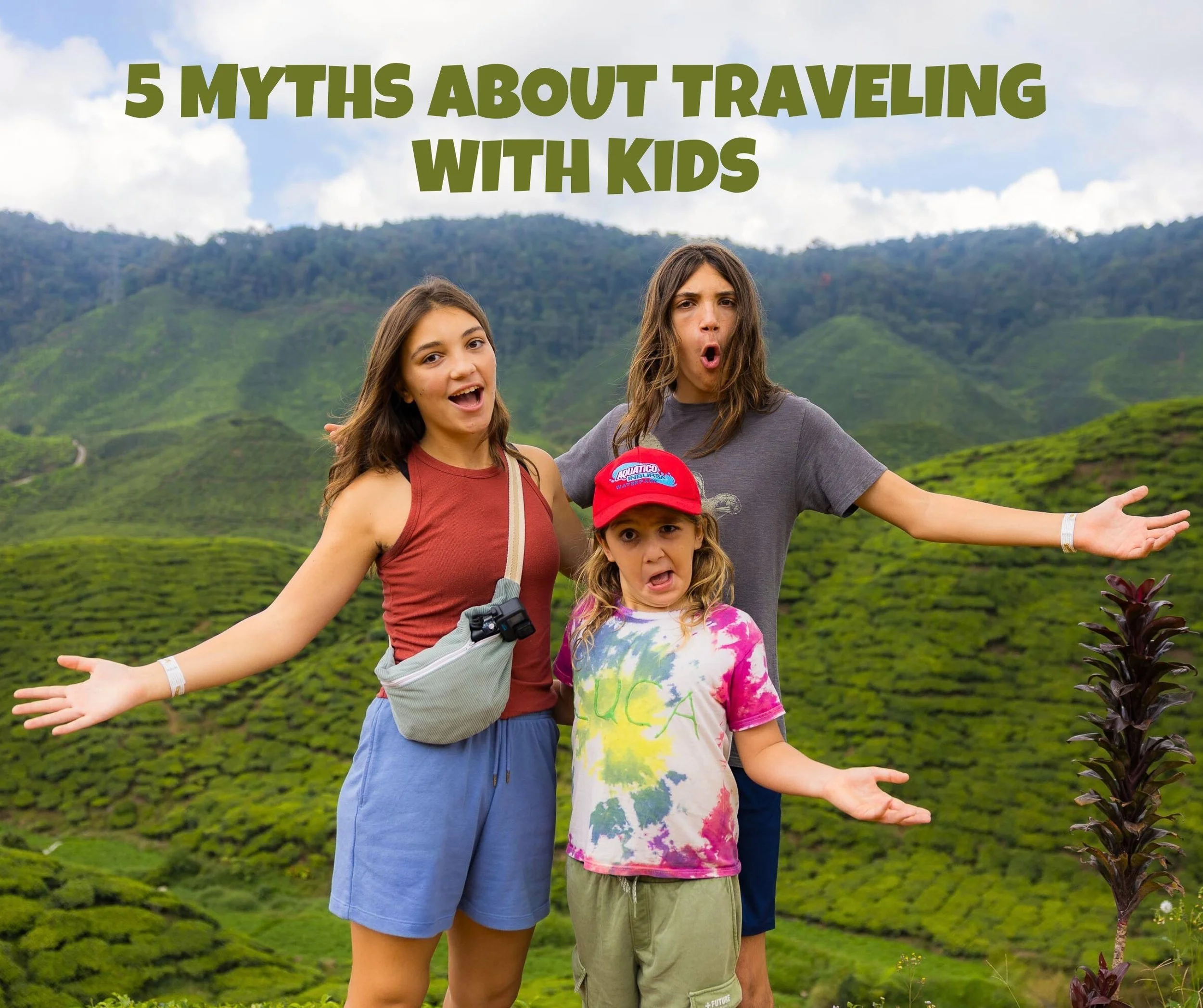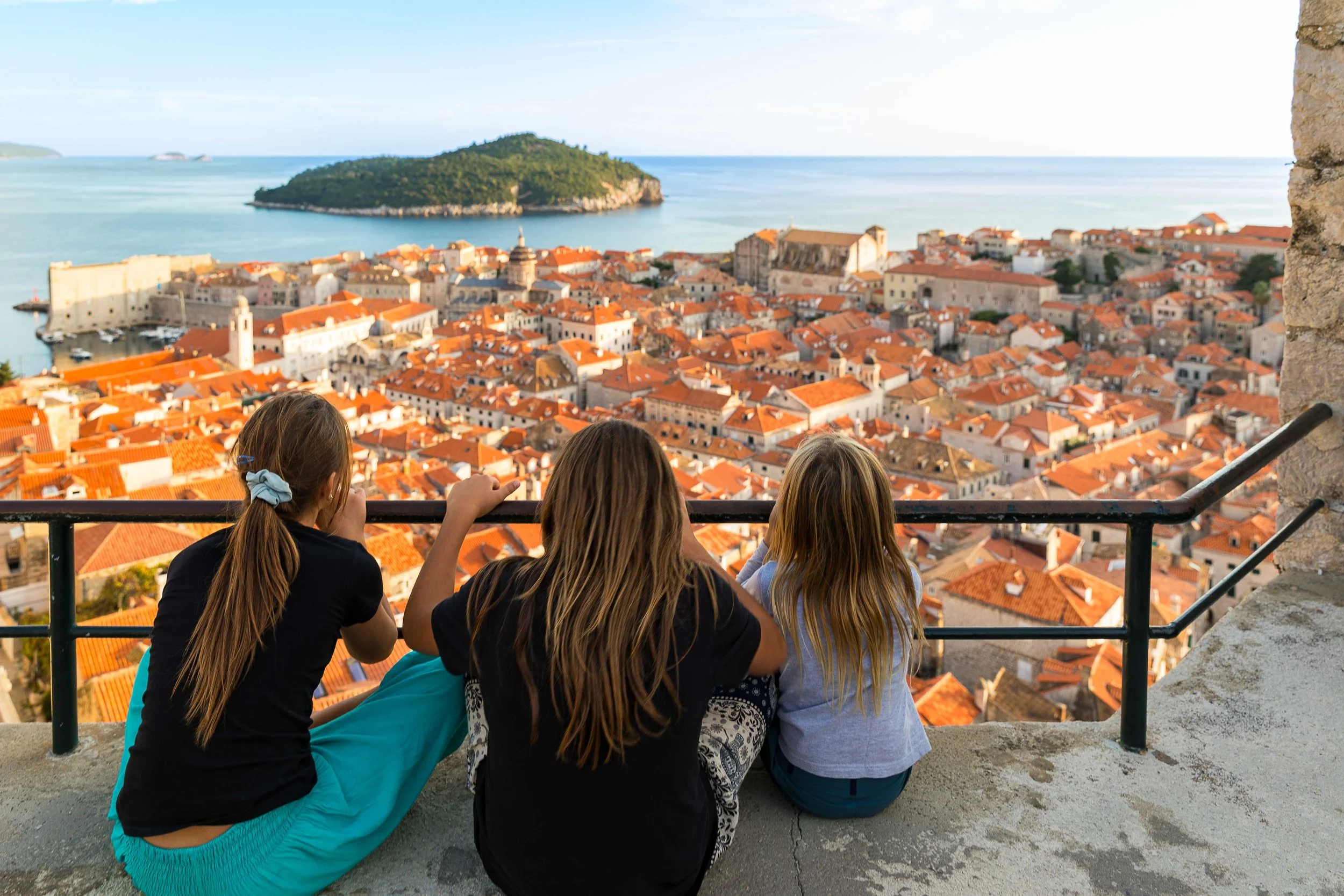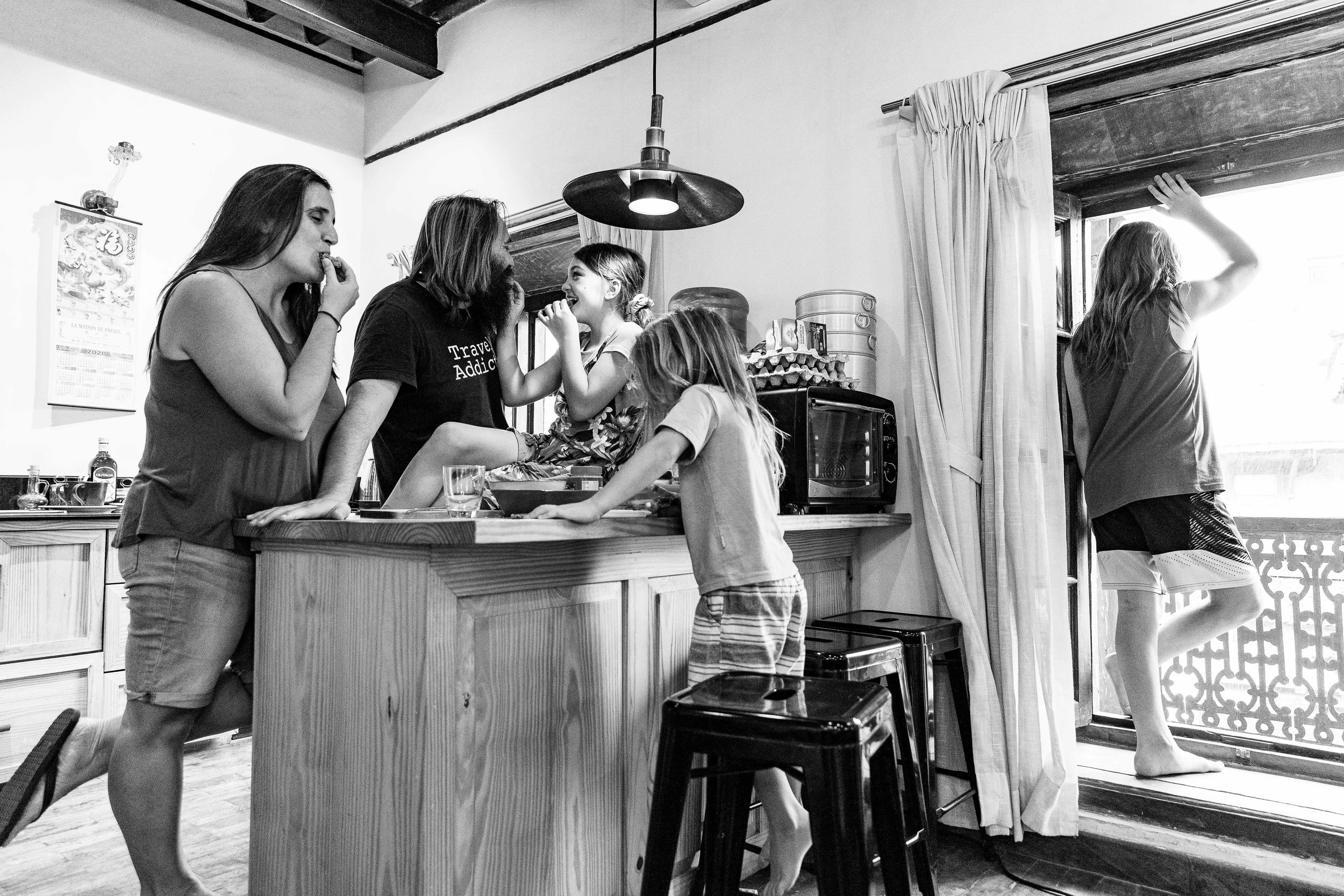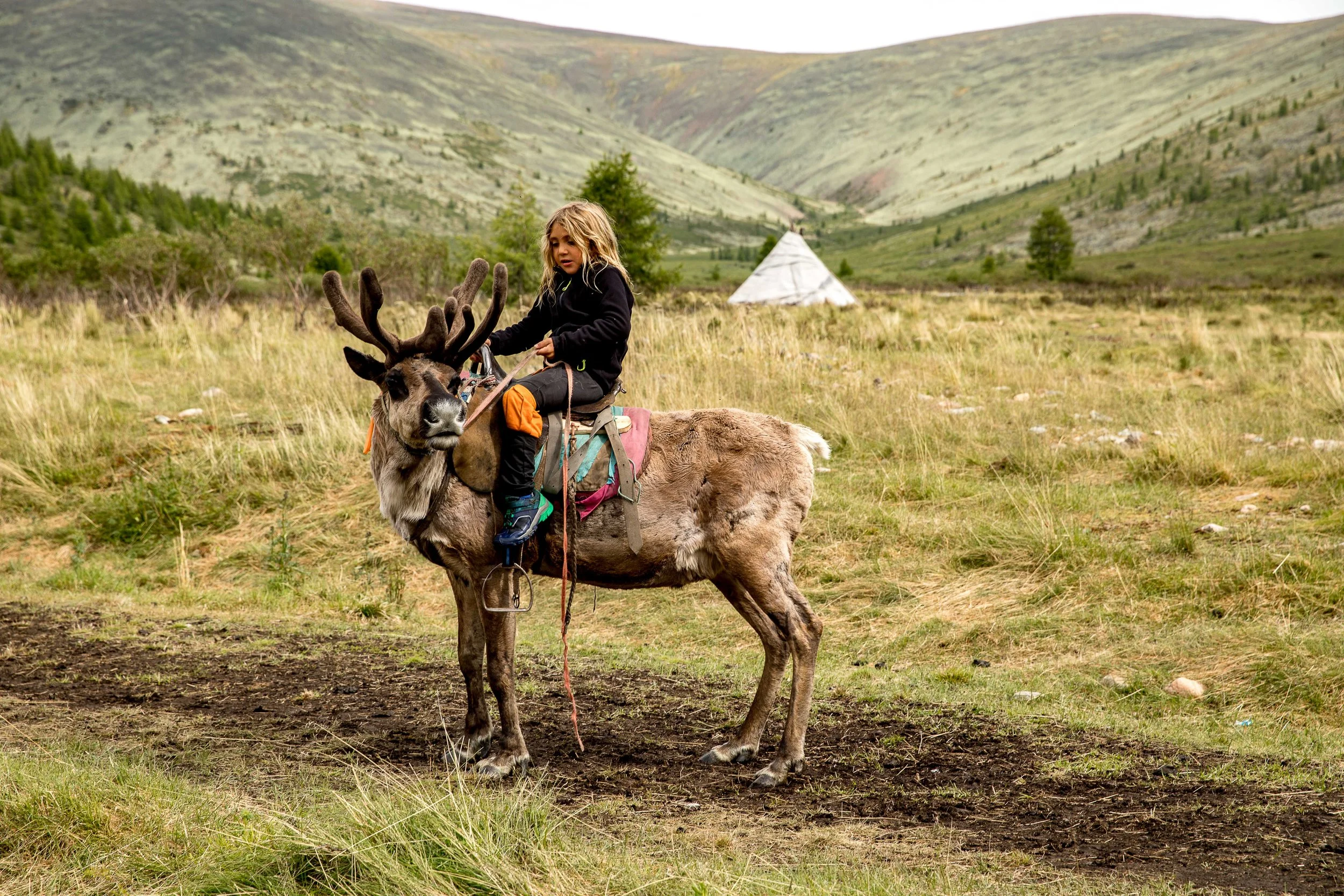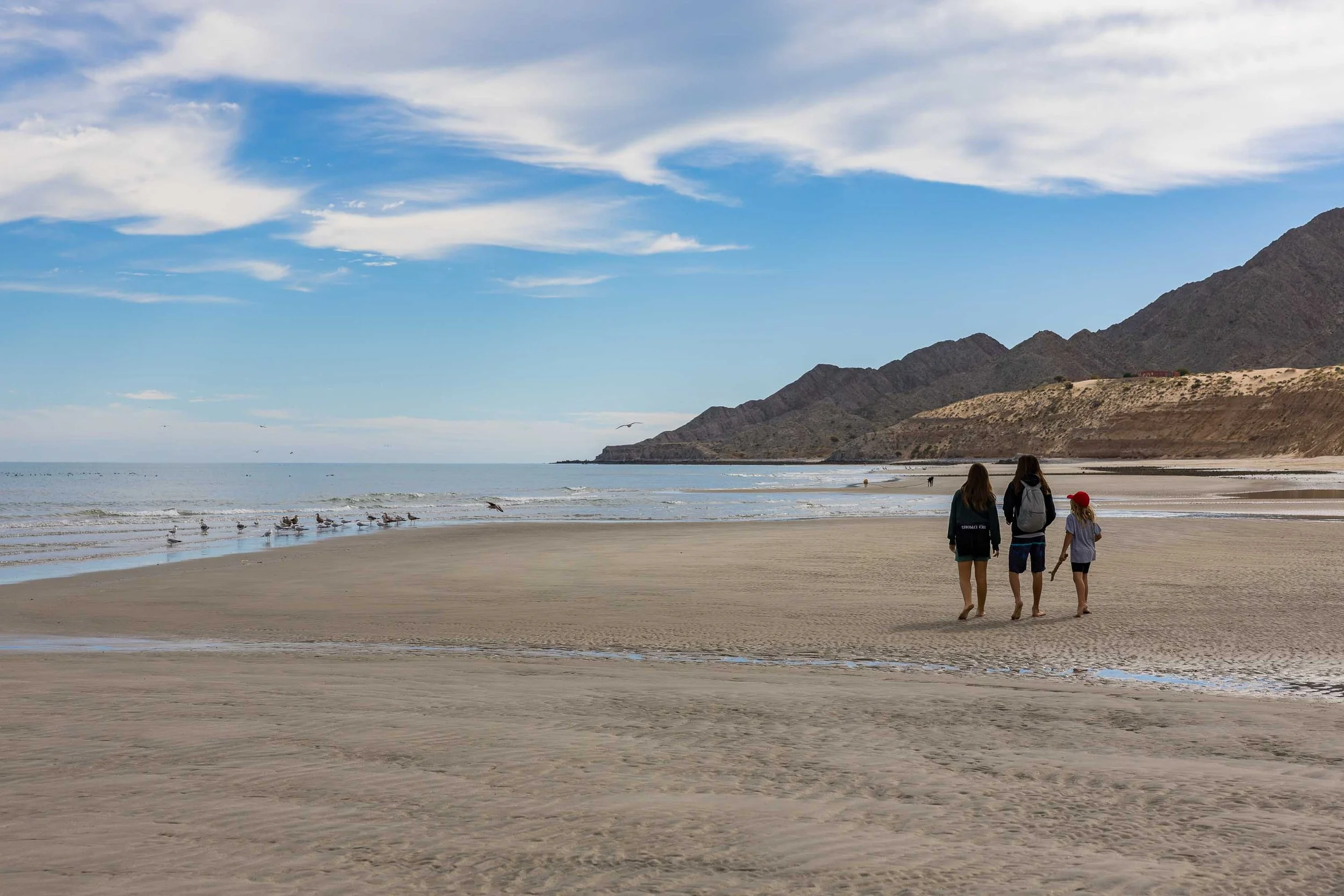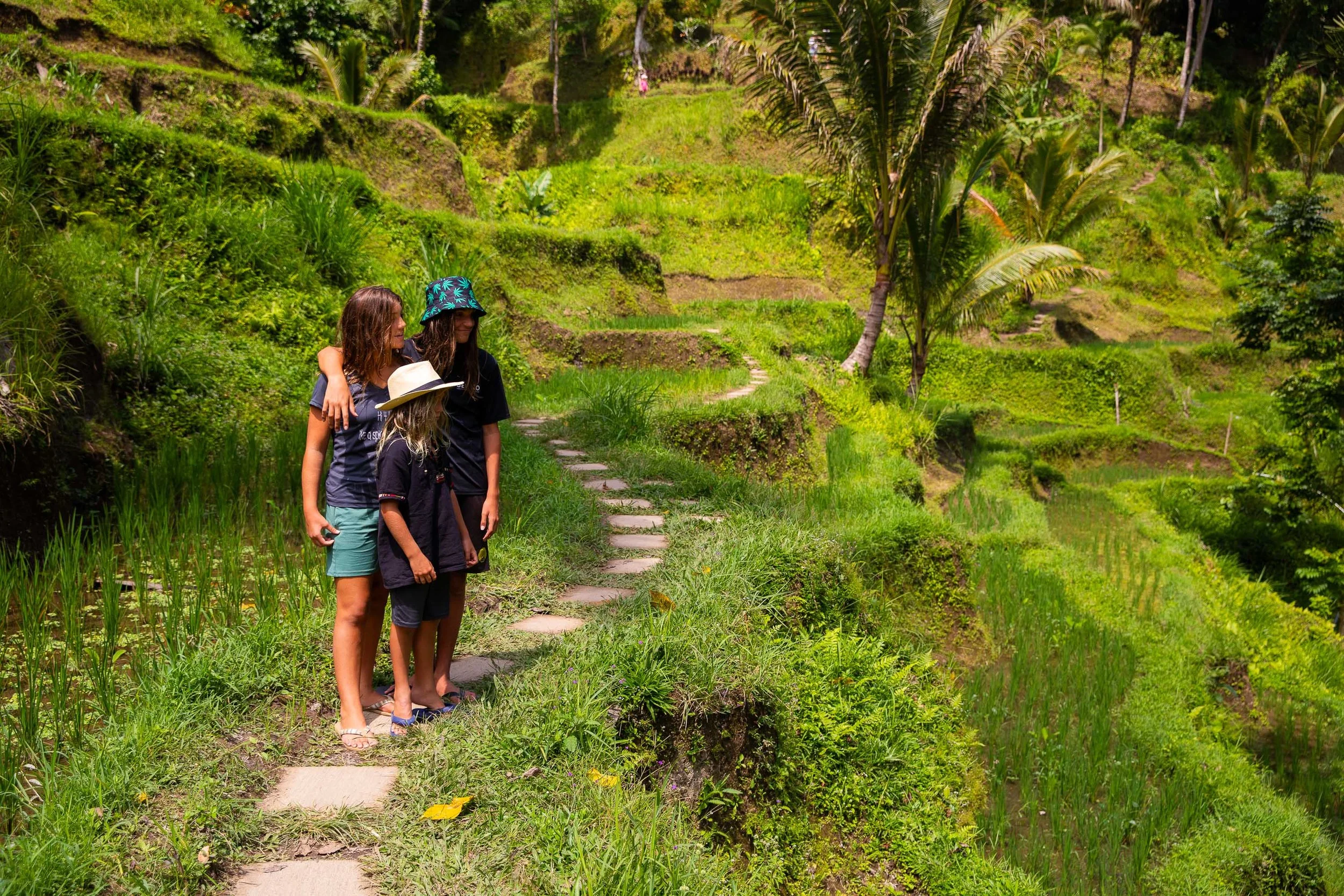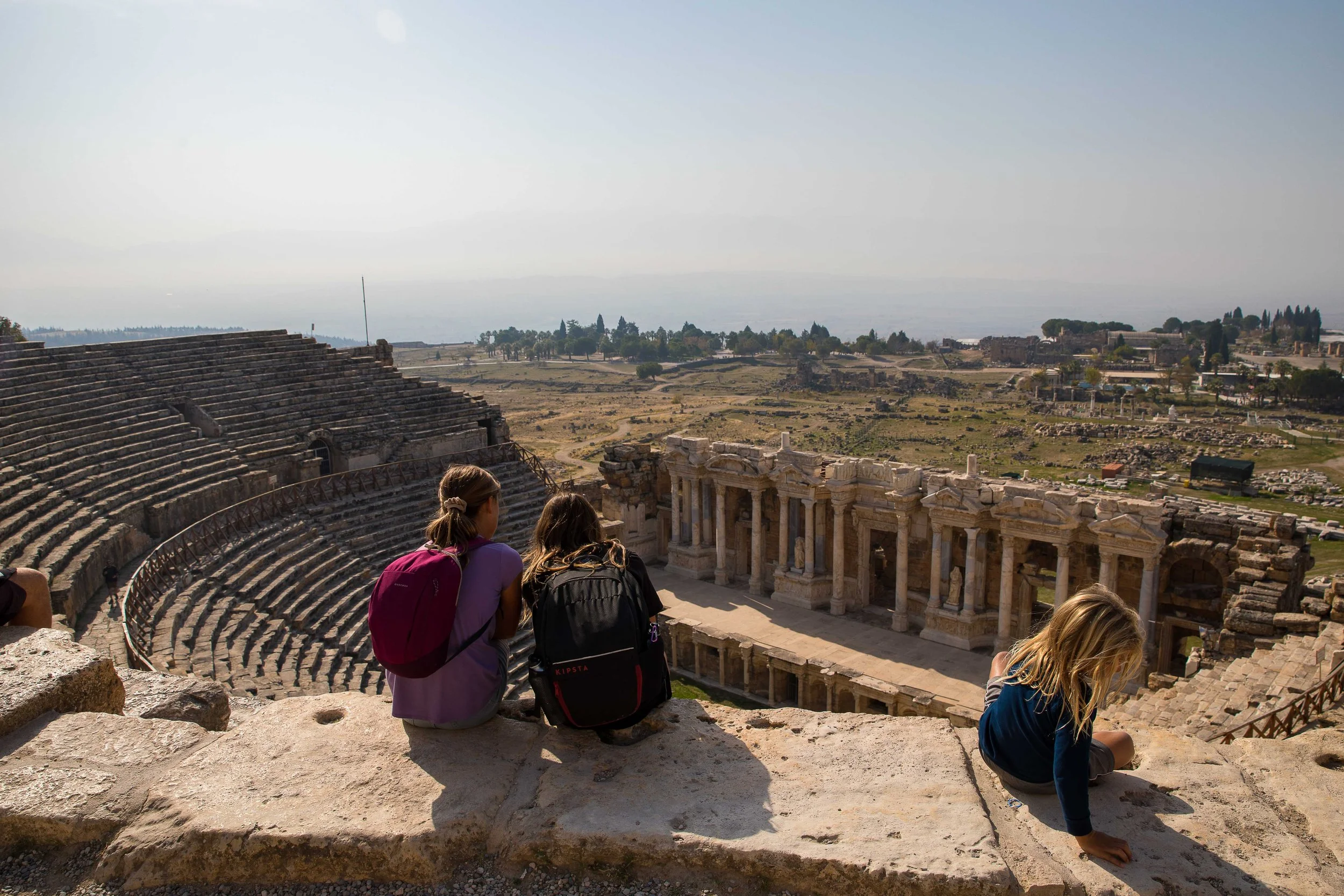Different Ways to Travel as a Family: How to Choose What Fits Your Journey
There’s no single right way to travel as a family. Over the years, we’ve explored the world through slow travel, road trips, public transport, tours, and everything in between. In this post, we break down the different travel styles families can choose from — and how to find the one that fits your journey.
Traveling as a family is one of the most transformative gifts we can give our kids and ourselves. But here’s something we’ve realized after more than seven years of traveling full-time:
There is no single “right” way to travel.
And honestly? That’s the beauty of it.
Throughout our journey, our travel style has evolved over and over again. Some seasons of life pushed us toward slow travel, while others were made for road trips, fast-paced adventures, or joining organized groups. Sometimes we wanted routine and stability. Other times, we craved movement, spontaneity, and a bit of chaos (in the best way).
The truth is…
👉 Families travel differently.
👉 Families change over time.
👉 And your ideal travel style may shift from trip to trip, and that’s perfectly okay.
In this blog post, we’re sharing a complete, honest overview of the different ways families can travel, what each one offers, what to expect, and how to choose (or combine!) the styles that fit your family best.
We’re not here to convince you that one way is “better.” We’re here to open the door to possibilities so you can travel with more confidence, ease, and joy, whether you’re planning one trip a year or building a lifestyle around exploration.
Let’s dive in. 🌏💛
1. Slow Travel
Stay longer. Settle in. Let life unfold.
Slow travel has become the backbone of our family’s full-time journey. To us, it means staying in one place long enough to understand its rhythm, not just its landmarks.
For our family, slow travel looks like:
Renting a small house or apartment for a few weeks or more.
Finding a favorite café.
Getting to know the local fruit seller.
Joining weekly classes or workshops.
Cooking meals at home.
Letting the kids create their own routines.
Slow travel works beautifully if you:
✔️ Work remotely
✔️ Worldschool or homeschool
✔️ Get overwhelmed by fast-paced itineraries
✔️ Want depth over quantity
What we love about slow travel:
Kids feel grounded and settled.
We make real connections with locals.
We spend less by avoiding constant transportation.
We learn more naturally through everyday experiences.
The downside?
You may see fewer places, but the places you do see become part of your story.
We value these seasons of slow travel because they give us the rare chance to simply be. They also balance out the periods when we need to move quickly due to short visas, logistics, or costs. When we slow down, we truly enjoy living like locals.
Often, we arrive with big plans because “we have the time”… and then we end up doing very little, simply because we’re content just being there.
And that’s the magic of slow travel: life doesn’t rush past you.
It unfolds gently, one meaningful moment at a time.
During our time in Hoi An, Vietnam, for example, we had a long list of things we wanted to see. And while we eventually did some of them, most of our days were spent biking everywhere, visiting the market to buy fresh vegetables from our favorite lady, and watching the sunset from our kitchen while preparing home-cooked meals. Those simple moments became our favorite memories of the entire stay.
2. Fast Travel / Multi-Stop Trips
The classic “vacation” travel style has its own magic.
Fast travel means visiting multiple destinations within a short period of time. Think:
10 days in Italy, exploring four cities.
2 weeks in Southeast Asia, hopping between countries.
A one-month whirlwind around Europe.
Families love this style because it packs a lot of variety into a short window, perfect for bucket-list trips or limited time off work.
We’ve done fast travel many times, especially in places where everything feels new and exciting (Japan, Morocco, India, Australia).
Why fast travel works:
✔️ You maximize experiences
✔️ You see a lot in a short time
✔️ It’s thrilling, stimulating, and full of energy
Challenges to expect:
Kids get tired more quickly.
Constant packing and unpacking can be draining.
Everyone needs downtime afterward.
We do a fair amount of fast traveling ourselves. Most recently, during our trip to Bolivia, we spent three intense days exploring the Salar de Uyuni, also known as the Salt Flats. We took an overnight bus from La Paz, arrived in Uyuni eight hours later, jumped straight into our private tour, and spent three unforgettable days visiting some of the most surreal landscapes we’ve ever seen.
It was exhausting and breathtaking all at once, absolutely worth it. But we also planned slow days before and after that side trip to balance out the intensity.
Our advice?
Build in a rest day every 3–4 days where you do nothing:
No tours, no rushing, no sightseeing. Just be.
It makes the entire trip smoother, happier, and far more enjoyable for everyone.
3. Public Transportation Adventures
Buses, trains, ferries, and the stories that come with them.
Public transportation is one of our favorite ways to immerse ourselves in local life. It’s affordable, eye-opening, and often surprisingly fun, especially with kids.
We’ve taken:
Night trains across Asia
Long-distance buses in Peru and Turkey
Tuk-tuks in Thailand and Vietnam
Ferries in Greece
Motorcycle taxis in the Philippines (yes, with all five of us!)
Why families love this style:
✔️ It’s budget-friendly
✔️ Kids find it adventurous
✔️ It’s fantastic for learning geography and culture
✔️ You’re surrounded by real, everyday life
But of course, there are limitations:
Unpredictable schedules
Long travel times
Difficult with lots of luggage
Less flexibility
We use public transportation most when we're:
Exploring cities
Traveling through countries with strong bus or train systems
Trying to keep our trip more eco-friendly
Lately, we’ve really enjoyed crossing borders over land rather than flying. For example, when we traveled from Vietnam to Cambodia, we took a ferry that stopped at the border, handled all the visa procedures for us, and then continued to Phnom Penh. From there, we rode tuk-tuks around the city and later took a public bus to Siem Reap.
We absolutely loved traveling this way; it was inexpensive, adventurous, and allowed us to interact with locals much more naturally. It also supports local businesses and gives you a deeper, more authentic glimpse into the true rhythm of daily life.
Public transportation may not be the most convenient option, but the memories, stories, and human connections it creates make it one of the most enriching ways to travel.
4. Guided Tours & Day Trips
Perfect when you want to learn, not plan.
There are destinations where guided tours truly enhance the experience. Think of…
Complex historical sites
Nature reserves
Cultural workshops
Regions where logistics are complicated
Countries where safety or language is a factor
We’ve joined tours in Bhutan, Bolivia, Mongolia, Tanzania, and India, and each one has taught us something we would never have discovered on our own.
What we look for in a good tour:
✔️ Small group or private options
✔️ Kid-friendly pacing
✔️ Guides who are passionate storytellers
✔️ Hands-on, immersive elements
When done well, tours bring depth, insight, and ease to your travels, especially when your brain needs a break from planning every detail yourself.
Over the years, we’ve taken many tours during our full-time travels. Some have been group tours, but for the most part, we prefer private ones, as we’re a family of five, which makes logistics much smoother.
In some destinations, tours are not just helpful, they’re required.
For example, you cannot visit Bhutan without being on an organized tour.
In other places, such as India, tours simplify life tremendously and help you gain a deeper understanding of the culture. In countries like Tanzania, joining a guided safari allows you to experience wildlife safely while learning from experienced experts.
For shorter, one-day tours, we may choose a group option if it’s more cost-effective for our family. One of our go-to companies to search for day tours is Viator loads of options at different prices. But for longer experiences, private tours tend to work best for us.
What we love most is how much insight a knowledgeable local guide can provide. A single conversation can open your eyes to traditions, history, and everyday life in ways you might never uncover on your own.
Sometimes, a tour isn’t just about seeing a place, it’s about truly understanding it.
🚗 5. Road Trips & Renting a Car
Freedom. Flexibility. Space to breathe.
With three kids, road trips quickly became one of our favorite ways to explore. Having our own car gives us a kind of freedom that’s hard to match. It allows us to:
Stop whenever we want.
Visit hidden spots.
Carry snacks, backpacks, jackets, and camera gear with ease
Take spontaneous detours.
Adapt to the kids’ energy levels.
Enjoy the journey as much as the destination
Some of our most memorable road trips have been in:
Iceland
The U.S.
Italy
Tunisia
Morocco
Australia
… and many more.
Road-tripping gives families space to breathe, literally and figuratively.
Since we often rent cars, we’ve tried many platforms over the years. We now use Discover Cars because it consistently makes the process easier. We like it because it:
Compares many rental companies at once.
Let’s us filter by family size (a must for a family of five!).
Offers traveler-friendly pickup options.
Shows transparent pricing and insurance terms.
Works in almost every country we visit.
We tend to rent a car when:
A destination is more spread out
Public transportation is limited
We want maximum flexibility
We’re exploring nature or smaller cities.
Including a car in your travel plans doesn’t mean you have to drive everywhere; it simply opens the door to more spontaneous, meaningful moments along the way.
In our 7+ years of full-time travel, we’ve rented cars countless times and have loved the independence they give us. It also helps us understand a country in a completely different way. For example, after driving in Japan, we realized it might be our favorite country to drive in. The highways are spotless, safe, and well-organized, and the rest stops are next-level (imagine ramen, not fast food!).
In other places, driving was more of an adventure. In Morocco, we once got pulled over for going just 3 km over the speed limit, but after a small “tip,” we were on our way again. Moments like that taught us a great deal about the local culture, rules, and humor.
Above all, the independence of having your own car is incredible. And in many countries, especially for a family of five, renting a car is not only more convenient, it’s often more economical than taking trains, buses, and additional transportation.
Road trips aren’t just about getting from point A to point B.
They’re about everything that happens along the way.
🚐 6. RV & Campervan Travel
Your home… on wheels.
For many families, traveling in a campervan or RV is the ultimate dream, and we completely understand why.
We’ve done campervan trips in New Zealand, Australia, and Ireland, and absolutely fell in love with the lifestyle. We loved the freedom, the flexibility, the ability to sleep in nature, and the sheer simplicity of unpacking only once and taking your whole “home” with you.
Why families love campervan travel:
Kids can nap, snack, and relax freely
You control the pace of your journey
You always have your own bathroom and kitchen
It feels adventurous, cozy, and so different from everyday life
Challenges to keep in mind:
Long driving days
Fuel costs
Finding campsites
Tight sleeping spaces
Not ideal in extreme heat or cold
But for families who love nature, independence, and the feeling of waking up somewhere completely new, it’s truly magical.
We loved it so much that during the COVID-19 pandemic, we finally bought our own campervan and traveled through some incredible parts of Europe. Having our house on wheels always with us felt comforting and freeing at the same time. And the places we got to sleep, on top of mountains, beside quiet lakes, in the middle of forests, were experiences we could never have had otherwise.
It’s a beautiful adventure to experience with kids, challenges, and all.
🌍 7. Organized Group Travel (Pop-Ups, Retreats, Learning Trips)
Community + structure = a beautiful combo.
In recent years, more families are joining:
Worldschooling pop-ups
Family retreats
Group travel itineraries
Learning experiences abroad
And it’s easy to see why. Community is powerful. Kids make friends within minutes. Parents find support, connection, and understanding. And best of all, you don’t have to plan every little detail yourself.
We know this firsthand. Over the years, we’ve hosted several family pop-ups around the world, including a beautiful one last year in our hometown of Florence, Italy. Our next one will be in Barcelona in May 2026, if you want to register click here. These gatherings always create something special: community, learning, and friendships that last far beyond the week together.
We spent our days exploring, learning, and enjoying shared experiences with friends we already knew, and many new ones. There is something magical about watching families grow closer, kids learn together, and adults find their own tribe along the way.
This style of travel is especially wonderful for:
Families new to international travel
Families craving community on the road
Solo parents traveling with kids
Anyone wanting deeper learning through curated activities
The only downside?
A little less flexibility, since you follow a group schedule. But the shared experience, the connection, the friendships, the sense of belonging, make it more than worth it.
Our next Worldschooling Adventures in Barcelona in May 2026 click on the link https://www.the5worldexplorers.com/shop/worldschooling-popup/
🎒 8. Backpacking / Minimalist Travel
Light, simple, spontaneous.
Backpacking with kids may sound intimidating, but it can actually be one of the most liberating ways to travel as a family.
When we travel lightly, we:
Move more freely
Spend less
Focus on experiences rather than things
Stay present
Bond through shared challenges and discoveries
This style works wonderfully in places like:
Asia
The Americas
Europe
And here’s the truth: you don’t need to be a 20-year-old backpacker to embrace minimalist travel.
We’ve never been traditional backpackers, not because we had anything against it, but simply because we started traveling with suitcases and never fully shifted. But we do love the moments when we stay somewhere longer and take short side trips with nothing but our backpacks. It feels freeing, simple, and refreshing.
Minimalist travel is far more accessible (and family-friendly!) than most people realize. Sometimes carrying less opens the door to experiencing so much more.
🏖 9. Resort-Based or Luxury Travel
Rest, recharge, reconnect.
There are seasons in family life when a resort or luxury stay is exactly what you need.
Maybe you’ve been traveling fast.
Maybe you’re exhausted.
Maybe you want the comfort of:
A pool
Room service
On-site activities
Kids’ clubs
Absolutely zero planning
We’ve done resort stays between big travel chapters, and they always help us reset. Once in Mexico, we fell in love with the resort so much that we extended our stay by five extra days. It had just opened, so they were offering a special rate, the kids adored every minute of it, and honestly, after a few challenging months, it was exactly what our hearts and bodies needed.
Not every trip needs to be an adventure.
Sometimes the best gift you can give yourself and your family is rest.
🔀 10. Mixing & Matching Your Travel Styles
Your perfect travel style may be a combination of many.
Here’s something most people never say out loud: you don’t have to choose one travel style and stick with it forever.
Your style can, and should, shift as your life changes.
It evolves with:
Your kids’ ages
Your budget
Your energy
The amount of time you have
And whatever season of life you’re in
You might…
Slow travel for a month.
Road trip the following season.
Join a pop-up or group experience.
Take a guided tour.
Enjoy a resort stay.
Use public transportation.
Backpack lightly for a short adventure.
And then rent a car for more flexibility.
There are no rigid labels here.
Family travel is fluid, flexible, and deeply personal.
In our 7+ years of full-time travel, we’ve tried every style and embraced them all. Each one brought something different, something meaningful, something worth remembering. They’ve shaped who we are as travelers, as parents, and as individuals.
And now, after all this time, we instantly know how we want to approach each new destination.
Take our upcoming month-long trip to Canada, for example: we’ll fly in, rent a car, drive between our stops, stay with friends, book a few Airbnbs, and even do a house sit. It’s a mix of everything, and it fits us perfectly for this moment in our lives.
Your ideal travel style doesn’t have to be one thing.
It can be everything you need, exactly when you need it.
💛 What Matters Most
No matter how you choose to travel, what matters is:
✨ You’re creating memories
✨ You’re connecting as a family
✨ You’re learning together
✨ You’re experiencing the world in a way that feels right for you
There is beauty in every style of travel, fast or slow, independent or guided, luxurious or minimalist.
And the “best” way to travel?
It's the one that fits your family right now.
Travel is not a race or a checklist.
It’s a way of living, connecting, and rediscovering yourself, one journey, one country, one small magical moment at a time.
Cooking Classes Around the World: Why They’re Our Favorite Family Activity
Some of our best family travel memories weren’t made at famous landmarks but in kitchens around the world. From rolling sushi in Japan to pounding spices in Cambodia, cooking classes have become our favorite way to learn, laugh, and connect as a family. Here’s why and how these hands-on experiences have turned into one of the most rewarding parts of our travels.
When you travel as a family, some of the most lasting memories come from the unexpected. For us, it hasn’t always been the iconic landmarks or the big-ticket attractions that stood out. Instead, some of our fondest memories have been created in kitchens around the world.
We never planned to make cooking classes a family tradition, but they gradually became an integral part of our journeys.
The first time we tried one, it was simply a fun way to fill an afternoon. But it turned into so much more, a chance to taste, learn, laugh, and bond. Before long, booking a cooking class became something we looked forward to almost as much as hiking to ruins, visiting temples, or exploring a new city.
Why? Because food is universal. It connects people across cultures, languages, and borders. The smell of garlic sizzling in oil, the rhythm of kneading dough, and the joy of sharing a meal at the end are experiences that feel familiar no matter where you are in the world. And when you learn to cook a dish from locals, you aren’t just following a recipe. You’re stepping into their culture, their family traditions, and their way of life.
Even now, certain flavors instantly carry us back to a specific time and place. The taste of lemongrass brings us to a Balinese kitchen, the aroma of freshly baked bread recalls a Parisian bakery, and a bowl of ramen transports us to Japan. Cooking classes have given us stories, skills, and family inside jokes that no souvenir could ever replace.
Why Cooking Classes Work So Well for Families
Cooking classes are the perfect family activity for so many reasons:
Hands-on learning: Children learn best by doing, and cooking is certainly a hands-on activity. Whether it’s kneading dough, stirring a bubbling pot, rolling sushi, or patting out tortillas, they get to be part of the process from start to finish. We’ve found that our children stay more engaged during cooking classes than almost any other type of tour or activity. There’s no long lecture, no sitting still, just action, creativity, and delicious rewards.
Cultural immersion: Every dish has a story to tell. Cooking with locals gives us insights into traditions and values that we’d never learn from a guidebook. In Bhutan, chilies aren’t just a spice; they’re a vegetable eaten daily. In Cambodia, banana leaves are used as cooking vessels. In Japan, rice preparation is an art form. These lessons go beyond the kitchen; they reveal the heart of a culture.
Memorable bonding: Cooking together sparks laughter and teamwork. We’ve had moments when spring rolls turned out completely different from what was intended, dumplings came out in funny shapes, and the kids bickered over who stirred the veggies best. These silly little moments become the stories we retell long after the trip. Cooking classes transform a group of travelers into a family team, even if that team argues over who gets to stir the pot!
Confidence-building: Something magical happens when kids cook a dish themselves. Suddenly, they’re eager to try foods they might otherwise refuse. Luca, our pickiest eater, happily devoured mochi in Japan after making it himself. When children take ownership of food, they become braver eaters and more open-minded travelers.
Some Cooking Classes We’ve Joined
We never set out to make cooking classes a family tradition, but after the first few, they naturally began weaving themselves into our travels. Each kitchen has become a window into a new culture, and every dish has added another layer to our family’s story.
To date, we’ve traveled to 61 countries and joined more than 30 cooking classes, each one teaching us something new about food, people, and ourselves. Here are some of the experiences that stand out most vividly along the way.
🍜 Japan – The Art of Ramen, the Precision of Sushi, and the Sweetness of Mochi
In Japan, we had the broadest range of culinary experiences. We joined classes on ramen noodles, sushi, and even our favorite dessert: mochi. Each one left us with new skills and a deeper appreciation for the foods we already loved, which now feel even more woven into our family’s story.
Ramen was all about patience. We attended a class tucked away in the back of a famous local restaurant in Kyoto. While much of the process involved specialized machinery, we still got hands-on experience with adding the flour, helping with the kneading, and collecting the noodles as they came out, ensuring each bundle was grouped to the exact right weight. Afterwards, we sat down at the restaurant and enjoyed what turned out to be the best ramen we’d ever had.
We also visited the Cup Noodles Museum, where we explored the fascinating history of instant ramen. We also attended a special class on how the noodles are prepared. At the end of the whole process, the kids loved designing their own custom cup, filling it with noodles and ingredients, and sealing it to take home. It was the perfect blend of education, creativity, and fun, making us appreciate ramen in a whole new way.
Sushi, on the other hand, required precision and focus. From learning how to handle rice properly (neither too tight nor too loose) to slicing vegetables and fish into perfect pieces, the kids quickly realized that sushi is as much about art as it is about food. Our teacher explained how sushi reflects balance and respect for ingredients, and it stuck with all of us. Food doesn’t need to be complicated to be meaningful.
Mochi was pure joy. It’s always been one of our favorite desserts, so we knew we had to learn how to make it. We joined a private class in a kind woman’s home, where she guided us through the process step by step, weaving in the history behind this traditional sweet. It was absolutely delightful, not only for the experience itself but also for tasting the best mochi we’d ever had. Even Luca, usually our pickiest eater, made his own and happily devoured them all!
🥔 Peru – From Market to Table
One of our most memorable classes in Peru began not in the kitchen but in the vibrant local market. With our chef as a guide, we wandered through stalls overflowing with colorful potatoes, exotic fruits like lucuma and chirimoya, and bundles of fresh herbs we’d never seen before. The kids loved asking endless questions about the ingredients that locals use on a daily basis.
Once our bags were full, we headed back to the kitchen, where the real magic began. Together, we prepared fresh ceviche with fish and a fragrant lomo saltado, quickly stirred to capture the perfect balance of flavors. To top it all off, we even learned how to make the traditional pisco sour, with a non-alcoholic version for the kids, of course!
Cooking straight from the market made us feel connected not only to Peruvian cuisine but also to the rhythm of daily life. Every bite carried us back to those lively stalls where our journey began.
🥟 Cambodia – From Market to Kitchen
In Cambodia, our cooking class also began in the heart of the market. We wandered past rows of exotic fruits, bundles of morning glory stacked high, and stalls where locals were busily preparing food for their own lunches. It was a vibrant glimpse into daily life as we picked out the fresh ingredients we would need.
Back at the cooking school, we learned to prepare amok, a fragrant curry traditionally steamed in banana leaves. Everyone took turns grinding spices with a heavy mortar and pestle, giggling as the powerful aromas made our eyes water. Folding the banana leaves into little bowls for steaming felt like a mix of arts and crafts with a delicious reward at the end.
When we finally sat down to taste our amok, the flavors were spicy yet rich, layered, and new to us. The kids were so proud of creating something so different from what they usually eat. It was a reminder of how food can gently push boundaries while still being fun and delicious.
🌴🍲 Bali – A Feast of Flavors
Bali’s cuisine is as vibrant as its landscapes, and our cooking class captured that perfectly. We began in the bustling morning market, wandering past stalls stacked with chili peppers, fragrant lemongrass, baskets of turmeric and galangal, and tropical fruits glowing in every shade of orange and yellow. The kids were wide-eyed as they compared unusual vegetables, tried samples from friendly vendors, and watched locals bargaining with ease.
Back in the kitchen, we rolled up our sleeves and prepared a complete Balinese feast. First came Lupis Bali, sticky rice cakes drizzled with sweet palm sugar syrup and sprinkled with coconut. Then nasi kuning, a fragrant yellow rice cooked with turmeric and coconut milk, perfumed the air as it steamed. We also made kering tempe, a crunchy, savory snack, and chicken serundeng, simmered chicken coated in toasted coconut, which combined crispy and juicy in the best way. To top it off, there were lumpia, crispy spring rolls, and the fiery sambal that Balinese meals are never complete without.
By the time we sat down to eat, the table looked like a banquet. Every dish told part of the island’s story, blending spices, textures, and flavors in ways that felt celebratory. Cooking in Bali wasn’t just about recipes; it was about sharing the spirit of togetherness that runs so deeply through Balinese culture.
🌽 Guatemala – Cooking in Antigua
In the cobblestoned streets of Antigua, food felt like history served on a plate. Our cooking class began with an introduction to Guatemala’s most iconic dishes, and each step pulled us deeper into the country’s traditions.
We started with pepian, a rich, earthy stew made with roasted spices, seeds, and vegetables blended into a thick sauce, then simmered with meat and potatoes. The flavors were bold yet comforting, and our kids were fascinated by how so many different spices could come together so harmoniously. To balance it, we made a radish salad, simple, fresh, and the perfect crunchy contrast to the heavier stew.
Next, we prepared rellenitos, one of the most surprising and delicious discoveries for us. These sweet plantains, filled with beans and lightly fried before being dusted with sugar, struck the perfect balance between savory and sweet. Watching the kids tentatively take their first bites and then immediately ask for seconds was one of those moments we’ll never forget.
We also stirred atol blanco, a warm, slightly sweet corn drink that has been enjoyed for generations. Finally, we tried our hands at hand-patting tortillas, a process that looks far easier than it is! The rhythm of slapping and shaping the dough was tricky at first, but soon everyone was laughing and comparing their slightly uneven results.
By the time we sat down to eat, the table was covered in a rich tapestry of color, scent, and texture. It wasn’t just about enjoying the food; it was about the pride of creating something together and the more profound appreciation for Guatemalan traditions that cooking gave us.
🥟 Mongolia – Dumplings & Noodles
Just days after arriving, we joined a class where we learned how the country’s traditional dishes rely on hearty, simple ingredients like flour, meat, and root vegetables, designed to fuel people for life in a demanding climate.
Our first dish was tsuivan, a noodle stir-fry that begins with making the noodles from scratch. Rolling, cutting, and stretching the dough was hands-on work that immediately pulled everyone in. Once the noodles were ready, we tossed them with meat, onions, and cabbage into a sizzling wok. The result was warm, filling, and comforting food that clearly matched the needs of Mongolian life.
Then came dumplings, which quickly became a family favorite. We learned to make two kinds: steamed and fried. The kids competed over who could make the most “perfect” dumpling, though in truth, some of ours looked hilariously lopsided. But no one cared, because when they came out of the steamer and frying pan, they all tasted incredible. Juicy, savory, and deeply satisfying, these dumplings felt like the ultimate comfort food.
What struck us most was the communal aspect of it all. Dumplings in Mongolia aren’t just food; they’re a way of gathering people together, with everyone pitching in to roll, fold, and cook. Sharing that meal, we felt as though we’d been given a glimpse into the heart of Mongolian hospitality and the strength of a culture built on resilience and togetherness.
🌍 And Beyond…
We’ve also cooked in other corners of the world, rolling pasta in Italy, shaping buttery croissants in France, pounding chilies into fiery ema datshi in Bhutan, and folding fresh spring rolls in Vietnam, and so many more. Each class gave us more than just recipes; they offered small but meaningful glimpses into the traditions and daily life of each culture.
Tips for Booking Cooking Classes with Kids
Over time, we’ve picked up some strategies for making cooking classes a success with kids:
Choose the right class for your child's age. Private or small-group classes are usually best, as they allow kids to spend more hands-on time.
Ask if it’s truly interactive. Some classes are more like demonstrations; kids enjoy it more when they’re rolling, stirring, or shaping food themselves.
Check the menu in advance. Ensure there are roles your kids can play, even if it’s as simple as decorating or stirring.
Prepare them before you go. Watching a video or reading about the dish makes kids more excited.
Embrace the mess. Cooking with kids is never neat, and that’s part of the fun.
When possible, include a market visit. Some of our most memorable lessons came not from the kitchen but from walking through bustling stalls. We’ve discovered fruits we’d never seen before, learned the local names for herbs and spices, and even tasted street snacks we wouldn’t have known to try. Markets bring the culture alive and give kids a chance to see where food truly begins.
Cooking Classes as Worldschooling
For our family, cooking classes aren’t just fun, they’re part of our worldschooling journey. Each one blends multiple areas of learning:
Geography – Where do the ingredients come from? How does climate shape food?
History – What stories are tied to this dish? Was it consumed by farmers, royals, or the general public?
Science – Why does dough rise? How do spices change when heated?
Math – Measuring, dividing recipes, and adjusting portions.
Language – Picking up food words in the local language.
Cooking has become one of the richest classrooms we’ve found on the road.
Final Thoughts
When we look back on our travels, the memories that bring us the most joy often come from the kitchens. Cooking classes have given us much more than recipes; they’ve given us moments of laughter, teamwork, and connection. They’ve shown us how families eat, celebrate, and live in different corners of the world.
So if you’re planning a family trip, consider signing up for a cooking class. Don’t just eat the local food, learn to make it. You’ll leave with a full belly, a new skill, and memories that will stay with you long after the suitcases are unpacked. And if you’d love some guidance in finding the perfect family-friendly classes or other hands-on cultural experiences, I’d be happy to help you weave them into your travels.
Wishing you all Happy travels!
Family-Friendly Accommodation: Hotels vs. Airbnbs vs. Resorts – Which is Right for You?
Traveling with kids means finding the right place to stay can make or break your trip. After seven years of full-time family travel, we’ve stayed everywhere—cozy city hotels, spacious Airbnbs, and relaxing all-inclusive resorts. Each has its perks, challenges, and perfect situations. In this guide, I share our real-world experiences to help you decide which option best suits your family’s style, budget, and trip goals.
Planning a family trip is exciting; you imagine the new sights, the delicious food, and the unforgettable experiences you’ll share together. But before you can jump on that plane or hit the road, there’s one big decision to make: Where are we going to stay?
And for many families, that’s where the overwhelm begins.
Should you book a hotel with its familiar comfort and convenience?
An Airbnb or vacation rental that feels like a home away from home?
Or a resort where everything you could want is right on site?
As a family of five who has been traveling full-time for over seven years, we’ve tried them all, sometimes out of choice, other times because that’s what was available. Each option has its pros, cons, and ideal situations, and over time, we’ve determined what works best, depending on our trip style, destination, and budget.
If you’re planning your next family adventure and wondering which accommodation is right for you, let’s break it down.
Celebrating my birthday in a beautiful hotel on Xandu Island in Türkiye
Hotels: Convenience and Reliability in One Package
Hotels are the old faithful of the travel world. Whether you’re staying in a small boutique property or a large international chain, you generally know what to expect. For families, this can be a huge relief, especially if you’re traveling to a new destination for the first time. Personally, one of my favorite parts of staying in a hotel is the included breakfast. I always check if it’s available before booking because there’s just something about heading down to the restaurant in the morning, coffee in hand, and enjoying a leisurely breakfast without having to cook or clean. It feels like a mini vacation within the vacation.
Why Hotels Can Be Great for Families
On-Site Amenities: From breakfast buffets to swimming pools, fitness centers, and sometimes even kids’ clubs, hotels offer conveniences that make traveling with children easier.
Daily Housekeeping: Let’s be honest, traveling with kids means things get messy quickly. Having someone tidy up daily is a small luxury that can make a big difference.
Service and Security: A front desk that can help with directions, call a taxi, or handle emergencies is a comforting safety net, especially in unfamiliar places.
Location, Location, Location: Hotels are often situated in central areas, close to popular attractions, restaurants, and transportation hubs.
Favorite breakfast for Luca in Doha, Qatar
The Downsides of Hotels
Space Can Be Tight: Standard hotel rooms often mean cramming everyone into one room. Some hotels offer family suites, but these can be expensive.
Limited Cooking Facilities: Without a kitchen, you’ll likely be eating out for every meal, which can get pricey (and exhausting if you have picky eaters).
Cost for Larger Families: You may need to book two rooms if the property doesn’t allow extra beds, and that can double your nightly rate.
Sharing the room in North Macedonia
When Hotels Work Best for Families
We’ve found hotels ideal for short city stays, layovers, or trips where we’re out exploring most of the day. For example, during our stop in Tokyo, we chose a centrally located hotel right next to the subway. The room was small, but we were barely there except to sleep. The convenience of being close to public transportation made it well worth the investment.
Airbnbs & Vacation Rentals: Your Home Away from Home
When we first started traveling full-time, Airbnbs quickly became a favorite. They gave us the space and flexibility we needed, especially when the kids were younger and eating at home was essential. Now that they’re older, having their own space has become just as important for maintaining a good balance during our travels. We all have different routines, and if we don’t have to share a single room, everyone can enjoy their time more (and get along a lot better).
Luca and Mass enjoying the couch in our Airbnb in Costa Rica
Why Vacation Rentals Can Be a Family’s Best Friend
More Space: Separate bedrooms, living rooms, and sometimes even outdoor areas mean everyone gets breathing room.
Kitchen Access: Being able to cook your meals can save a significant amount of money and help maintain routines for younger kids and picky eaters.
Laundry Facilities: A washer and dryer are a game-changer for long-term travel, reducing the need to overpack and preventing laundry emergencies.
Local Neighborhood Feel: Staying in a residential area can provide a more authentic experience of local life. However, these days, you can also find plenty of vacation rentals in very central locations.
Emma and Cosimo are enjoying the kitchen in our Airbnb in Phalaborwa, South Africa
The Downsides of Vacation Rentals
Inconsistent Quality: Not all listings live up to their photos or glowing reviews. We’ve learned to carry a few essential kitchen utensils, just in case the rental is missing something crucial. We have a video about them here!
Extra Fees: Cleaning, service, and “extra guest” charges can add up quickly.
Less Immediate Support: There’s no front desk to solve problems instantly. If the Wi-Fi stops working, you’re relying on your host to resolve the issue.
When Vacation Rentals Work Best for Families
We love Airbnb and other vacation rentals for more extended stays or when we want to slow down in one place. In Hoi An, Vietnam, we rented a house for a month that had a pool, a spacious kitchen, a lovely living area, and three bedrooms, plenty of space to spread out. The property even came with bikes, allowing us to get around town easily. The kids could have their own areas, we could cook most of our meals, and best of all, it truly felt like home.
Cosimo and Emma are enjoying the space in our Hoi An, Vietnam Airbnb
Resorts: All-Inclusive Fun and Relaxation
Resorts can feel like stepping into a bubble of vacation bliss. Everything you need - food, entertainment, and activities - is right on site. For some families, that’s precisely what’s required, especially when the goal is pure relaxation.
When we stayed at our first all-inclusive in Mexico Catalonia Costa Mujeres All Suites & Spa, after traveling full-time for three years, we loved it so much that we extended our stay by an extra five days. It was such a refreshing break from all our usual travel responsibilities that none of us wanted to leave.
Cosimo and Emma at Catalonia Costa Mujeres All Suites & Spa
Why Resorts Can Be Perfect for Families
All-Inclusive Options: Meals, snacks, drinks, and often activities are included, which makes budgeting easier.
Endless Entertainment: Pools, waterslides, kids’ clubs, and organized activities keep children happily occupied.
Safety and Security: Gated properties and staff on-site 24/7 give peace of mind.
Relaxation for Parents: Knowing the kids are busy (and safe) lets parents unwind.
Luca is going to order his food at Catalonia Costa Mujeres All Suites & Spa
The Downsides of Resorts
Less Local Immersion: If you don’t leave the property, you may miss out on authentic cultural experiences. We usually enjoy the resort itself and then explore the area afterward, but since we travel full-time, we can organize our time more flexibly.
Higher Upfront Cost: While you might save on meals and activities, the initial price can be steep.
Fixed Schedules: Meal times and activity slots may not always fit your family’s rhythm.
When Resorts Work Best for Families
Resorts are ideal for beach vacations, milestone celebrations, or moments when you simply need to recharge.
During our stay in Mexico, the kids loved the daily activities, and we appreciated knowing that meals were taken care of. They would wander off on their own to grab lunch from the different food stands, then spend the entire day swimming at the beach or playing in the pool. The entertainment team always had something fun planned, and the nightly shows were terrific. It was one of those rare trips where no one complained about being bored or hungry.
Mass and I enjoying a spa date at Catalonia Costa Mujeres All Suites & Spa
How to Decide: A Family Accommodation Checklist
When choosing where to stay, ask yourself:
Trip Length: Short trip or extended stay?
Purpose of Trip: Relaxation or exploration?
Budget: What’s your total nightly cost, including meals and transportation?
Space Needs: Will one room be enough, or do you need separate areas?
Food Plans: Do you want to cook or eat out?
Kids’ Ages & Needs: Do they need naps, play areas, or specific amenities?
Enjoying the space in our hotel in Hanoi, Vietnam
Our Personal Take
We’ve learned there’s no single “best” option; it all depends on the trip.
Hotels are our go-to for short city breaks or stopovers.
Airbnbs are ideal for longer stays, especially when we need space to work and homeschool.
Resorts are perfect when we want a break from planning and relax together.
The beauty is, you can mix and match. On one trip, we’ve stayed in a resort for a few days of rest, then moved to an Airbnb in the city for exploration.
Luca making his breakfast in Costa Rica
Final Thoughts
Over the years, we’ve stayed in just about every type of accommodation, from tiny city hotel rooms to sprawling vacation homes and all-inclusive resorts. Each one has its time and place, and our choice often depends on the destination, length of stay, and what we want from that trip.
Sharing some time on the same bed in Hawaii
Since we travel full-time, we often opt for Airbnb accommodations over other options, especially in countries with high living costs. Having a kitchen means we can cook our meals, which helps us keep costs down, and we also get the bonus of extra space for everyone to spread out.
That said, we still happily choose hotels for short stays, city breaks, or when we want the ease of included services. The cool thing is that more hotels are starting to offer apartment-style rooms with kitchenettes, which still include breakfast. During our recent stay in Phnom Penh, we experienced the best of both worlds: the space and cooking facilities of an apartment, combined with a delicious breakfast waiting for us every morning.
Ultimately, there’s no single “right” choice; it’s about finding the accommodation that best matches your travel style, needs, and priorities for that particular trip. And if you’re ever unsure which option might work best for your family, I’m happy to share my experience and help you find the perfect fit as your travel agent.
Why We Prioritize Experiences Over Destinations (And How You Can Too)
After years of full-time family travel, we’ve discovered that the real magic doesn’t come from checking off landmarks; it comes from the experiences that connect us to the people, culture, and spirit of a place. From cooking Khmer curry in Cambodia to drifting along the Mekong in a sampan boat, it’s these immersive moments that have shaped our journey the most. In this post, I’m sharing how shifting our focus from destinations to experiences transformed our travels and how it can do the same for yours.
Let’s be honest...
Most travelers plan their trips around a place:
“We’re going to Paris!”
“Let’s see Machu Picchu!”
“Tokyo is on our bucket list!”
But after years of full-time travel as a family, we’ve learned that the true magic doesn’t come from checking off destinations.
It comes from what you do when you’re there.
From making fresh spring rolls in Cambodia to sandboarding in the Peruvian desert, our most memorable moments come from experiences that connect us to people, culture, and nature, not from landmarks.
Here’s why we’ve shifted from chasing places to seeking experiences and how that simple mindset change has transformed our travels.
Dune surfing in Huacachina, Peru
1. It Started With One Unexpected Moment
When we first started traveling full-time, I had a checklist packed with famous sites we had to see. We rushed through museums, monuments, and “top 10” attractions, trying to squeeze in as much as possible.
Then the pandemic hit, and we found ourselves stuck in Nepal. During that unexpected pause, something shifted. We had the chance to interview a local artist for our YouTube channel (AMAR SHAKYA, PAUBHA ARTIST in Nepal. People we meet), and in the process, he offered to teach our kids his artistic techniques. A few days later, we also interviewed our hosts, who gave us a place to stay for a reasonable price the night before Nepal went into lockdown (COSY NEPAL in PATAN, Nepal. People we meet), and that’s when everything changed.
That’s where we found a real connection.
That’s where we discovered the true inspiration behind our travels.
It wasn’t about checking off landmarks anymore.
It was about slowing down and connecting, on a deeper, more meaningful level, with the people and culture around us.
That was our turning point. We realized the moments we remember most aren’t the biggest or most famous, they’re the ones where we engage, share, and genuinely feel where we are.
2. Cambodia: From Street Food to Circus Magic
Let me give you a more recent example. When we visited Cambodia a few months ago, we naturally marveled at Angkor Wat and spent time exploring the temples.
But what we really remember is making Khmer curry together during a local cooking class in Siem Reap. After picking up our ingredients at the local market, we were welcomed into a small open-air kitchen. Our teacher showed us how to grind spices by hand, cook over an open fire, and finish our dishes with delicate banana leaf flowers.
The kids were so proud of what they made, especially Luca, who almost burned himself while enthusiastically stirring the meat in the pan. Despite the near mishap, we all finished every bite with big smiles.
That evening, we attended the Phare Circus, an incredible performance blending storytelling, acrobatics, and music. What made it truly unforgettable was learning that the performers were all young people from disadvantaged backgrounds, trained through a social arts school. The show wasn’t just entertaining, it was profoundly moving. I found a ticket option on Viator that allowed us to go behind the scenes, and it gave all of us a much greater appreciation for the effort, passion, and dedication these artists pour into their craft. It left a lasting impression on every one of us.
A beautiful moment also occurred backstage. As we watched the artists prepare, Mass noticed a therapist massaging one of the performers who seemed to be in pain. With his background in physical therapy, he offered to help. The therapist welcomed his support, and within minutes, the artist began to feel better. Soon, more performers began lining up for a quick check-up from Mass. It turned into a spontaneous collaboration, and what struck us most was how open and grateful everyone was. The therapist didn’t feel threatened; she just felt relieved to have extra help healing her team. That moment revealed a great deal about the values of this culture: community, humility, and care for one another, without ego or competition.
Those two experiences, cooking and the circus, offered more cultural understanding than any guidebook or history tour ever could.
And while we found these activities online (some through Viator, others through local tips), what mattered most wasn’t how we booked them, but how they made us feel.
Phare Circus group shot in Siem Reap, Cambodia
3. Vietnam: Lanterns, Sampans, and Slow Moments
Vietnam gave us so many sensory memories: the scent of fresh herbs, the buzz of scooters weaving through the streets, and the warmth of the people everywhere we went. But two experiences stood out above the rest.
In the charming town of Hoi An, we took part in a traditional lantern-making workshop. Surrounded by silk fabric, bamboo frames, and excited chatter, our kids created their lanterns from scratch. The process was calming and almost meditative. We carefully glued the fabric, bent the frames, and chose colors that reflected our personalities.
The kids were entirely focused, and by the end, each of them proudly held a handmade lantern, a small piece of Vietnam that we had shaped with our own hands, and was coming home with us.
Later in the trip, we headed south to the Mekong Delta, where we climbed into a small wooden sampan boat, made home for a few nights, and quietly glided through narrow canals. Everything slowed down. The only sounds were the gentle rhythm of the river, children splashing and laughing in the water, and the occasional passing boat loaded with rice, fish, or bricks, products of life lived along the riverbanks.
It was peaceful, even for our kids, who usually aren’t fans of “slow.” But something about being rocked by the current and witnessing everyday life along the Mekong calmed us all. There was no rush, no loud noise, just stillness, simplicity, and presence.
That boat ride wasn’t thrilling in the typical sense, but it offered us a quiet, powerful connection to the land and the people, a connection that’s hard to put into words and impossible to forget.
These two moments, crafting lanterns and drifting through the Mekong, reminded us just how powerful simple, hands-on experiences can be. They slowed us down and pulled us into the heart of Vietnamese culture in a way that no big-city tour ever could.
5. What Happens When You Travel for the Experience
When we focus on doing rather than just seeing, something shifts:
We connect with the people who live there
We learn about daily life, culture, and values in a hands-on way
We remember the trip more vividly and longer.
Our kids stay engaged because they’re part of the action
We return home changed, not just rested.
6. How to Start Prioritizing Experiences Over Destinations
You don’t have to overhaul your entire travel style; shift your focus a bit. Here’s how:
🧭 Ask Different Questions
Instead of: What’s the top place to visit in this country?
Ask: What do we want to experience, feel, or learn while we’re here?🔍 Look for Local-Led Opportunities
Cooking classes, artisan workshops, food walks, farm visits, and storytelling events all offer a glimpse into real life.
We often use a combination of online platforms (such as Viator or GetYourGuide), local Facebook groups, and personal recommendations to find these.
👨👩👧👦 Let the Kids Pick
Ask your kids what they want to try: climbing, dancing, building, painting, eating, and let their curiosity lead.
⏳ Leave Room for Discovery
Don’t overbook every day. Some of our best experiences happened when we slowed down or had “open” afternoons.
7. But What About the Famous Stuff?
Of course, we still visit famous places! We’ve stood in awe at the Taj Mahal, explored the temples of Angkor Wat, and even gone up the Eiffel Tower, twice!
But instead of racing through 10 sites in 3 days, we choose fewer places and go deeper.
When we visit iconic landmarks, we look for ways to make the experience more personal and meaningful. That might mean:
Hiring a local guide to share stories and history beyond the surface
Booking an experience that helps us better understand the local culture
Letting the kids engage in their way, through questions, photos, video, or simply quiet observation
These small shifts turn famous sights into lasting memories.
They’re no longer just photos in a camera roll, they become part of our shared story.
8. Why This Matters (Especially for Families)
When traveling with kids, attention spans, energy levels, and moods are crucial.
They’re not likely to remember a monument, but they will remember making something, tasting something, or talking to someone.
Experience-first travel:
Builds empathy
Sparks curiosity
Strengthens family bonds
Feels more human
It’s not just about what you see. It’s about what you feel together.
9. What I’ve Learned from Planning Our Adventures
After traveling full-time since 2018, I’ve had my fair share of trial and error when it comes to planning meaningful trips for our family. I’ve learned that it’s not just about where you go, it’s how you experience it. And honestly, the most memorable moments usually aren’t the ones that take the most planning, they’re the ones that feel the most authentic.
Over time, I’ve found a rhythm in how I research and choose activities. I start by thinking about what we’re curious about, what could help us understand the place, or connect with the people who live there. Then I look for experiences that feel aligned with that, whether it’s a cooking class, a street food tour, a hands-on workshop, or a slow boat ride through nature.
I’ve also learned to balance cultural exploration with fun and downtime, especially when spending time with kids. When I find something that works well for us, I love sharing it with other families who are trying to create their meaningful adventures.
Lately, I’ve discovered many great experiences through Viator; it’s been a helpful resource for finding locally led activities that are easy to book, especially in unfamiliar places. But no matter how we see them, it’s the feeling they give us that matters most.
If you’re trying to plan something that goes beyond the typical tourist trail, know that you don’t have to overcomplicate it. Start with curiosity, leave room for spontaneity, and let connection lead the way.
Final Thoughts
Where you go does matter, but what you do while you’re there matters even more.
Traveling for experiences doesn’t mean skipping the Eiffel Tower or Machu Picchu.
It means slowing down, asking questions, meeting people, and finding the joy in the little things.
So next time you plan a trip, ask yourself:
👉 What experience do I want to come home remembering?
Chances are, it won’t be a selfie in front of a monument; it’ll be the moment your kids tried something new, or the conversation you had over a meal you helped cook together.
Let those be the moments that define your travels.
Why I Started My Travel Business (And How It Can Help Families Like Yours)
After years of traveling the world full-time with my husband and three kids, I decided to turn our experience into something bigger, a way to help other families create unforgettable adventures of their own. In this post, I share the story behind Limitless Travel Life, why I started this travel business, and how I support families who dream of traveling differently, whether for a few weeks or a whole lifestyle shift.
In 2018, we made a life-changing decision: we left behind the predictable rhythm of everyday life to travel the world full-time as a family of five.
It wasn’t a decision we made lightly, but deep down, we knew we were craving something more, more connection, more learning, more life.
We packed what mattered, let go of what didn’t, and flew to Bali. It was our first step into a lifestyle that would challenge us, change us, and ultimately shape who we are today.
At the time, we had no intention of making this a business. We just wanted to experience the world together. But as we continued to travel across continents, cultures, and seasons of life, something beautiful started to unfold.
The World Became Our Classroom
One of the most beautiful shifts that came with full-time travel was in the way our kids learned. We didn’t just take them out of school, we took them into the world. We didn’t have a set curriculum or perfect plan, but somehow, everything became a lesson.
They learned history while walking through ancient ruins in Italy, Turkey, Egypt, and other locations. Geography came alive through train rides in Mongolia, hiking in New Zealand, and many other places around the world. Biology was explored while snorkeling in Bali or spotting orangutans in Borneo. They met people who spoke different languages, ate food they’d never tried before, and slowly, their worldview expanded, and so did ours.
This approach, often referred to as worldschooling, isn’t about recreating school on the road. It’s about embracing curiosity, following interests, and letting life itself become the classroom. It’s messy and magical all at once. And it’s one of the things I cherish most about this journey.
“How Do You Do It?”
As we traveled, we began sharing our story online through our blog, The 5 World Explorers, and our YouTube Vlog. We weren’t trying to become anything; we just wanted to document the adventure so our kids would always have it as a memory and stay connected to friends and family. But over time, our inbox began filling with messages:
“How do you plan all of this?”
“What do you do about education?”
“Is this doable with kids?”
“Can you help me plan a trip like this?”
These weren’t people looking for luxury resorts. They were parents like us, curious, maybe a little overwhelmed, but deeply craving something different for their families.
Initially, I answered questions sporadically. Then came video calls. Then came helping others plan their first big trips.
That’s when I realized something: this wasn’t just our story anymore. I could help others write theirs.
A Business Rooted in Experience
That’s how Limitless Travel Life came to be, not as a business plan, but as a natural extension of what we were already doing.
I didn’t set out to become a travel advisor. I just knew what it felt like to want more out of life, and to wonder if it was possible with kids in tow. I had learned a great deal about logistics, planning, slow travel, packing light, and making a new place feel like home, and I wanted to share this knowledge with others in a meaningful way.
This isn’t a big agency. I don’t do flashy group tours or high-end vacation packages. What I offer is real-world insight from someone who has lived this life and continues to live it.
Why I Help Families Travel Differently
Because travel can be more than just a break, it can be a reset, a reconnection, a new way of seeing everything.
It doesn’t have to mean selling everything and leaving for years.
Sometimes, it’s two weeks somewhere unexpected. Sometimes, it’s adding more intention to your next family vacation. Sometimes, it’s simply believing that your family deserves adventure, too.
What I’ve learned and what I try to share is that there isn’t one way to travel. But there is your way. And it’s worth exploring!
💛 Why It Matters
I didn’t start this business to sell trips. I started it because I know how transformative travel can be, especially when shared as a family.
Whether you're curious about worldschooling, overwhelmed by the planning process, or just dreaming of something different, I want to help you take that next step. You don’t need to figure it out alone.
Some families want to explore deeper. Others want to travel smarter. I’m here for both, because there’s no one right way to do this, only your way.
📬 Let’s Connect
If this resonates with you, I’d love to hear from you. I offer a complimentary 20-minute discovery call (which you can book by emailing me at limitlesstravellife@gmail.com) to determine if we’re a good fit, or you can reply with a question.
Your dream family adventure doesn’t need to wait for someday. Let’s start exploring what’s possible together.
With gratitude,
Sarah
Top 5 Myths About Family Travel And What It’s Really Like
Think family travel is too expensive, too stressful, or just not worth it because "the kids won’t remember"? You’re not alone, but you might be surprised. After 7 years of full-time travel with our three kids, we’ve heard it all and lived through the truth behind the myths. In this post, we’re busting the 5 biggest misconceptions about traveling with kids and sharing what it’s really like to explore the world as a family.
When we first told people we were planning to travel the world full-time with our kids, the reactions were mixed. Some were excited for us, others were politely skeptical, and a few were downright shocked.
“Isn’t that dangerous?” “How can you afford it?” “But what about school?” If you’ve ever thought about taking your family on a big travel adventure, even for a few weeks, chances are you’ve heard (or thought) some of these same things.
The truth is, there are many myths surrounding what family travel looks like. After over 7 years on the road with our three kids, I can confidently say that while it’s not always easy, it’s far more doable and rewarding than most people think. So today, I want to bust some of the biggest myths I’ve heard (and believed myself at one point!) and share what family travel is really like.
View of Dubrovnik, Croatia from the walls
Myth #1: “It’s too expensive to travel with kids.”
This is the most common myth we hear. Yes, travel costs money. But so does staying home: mortgages, school fees, extracurriculars, entertainment, eating out, gas, and so much more. When we added it all up, we realized we could live more affordably while traveling, especially in countries with a lower cost of living.
What it’s really like:
We’ve found ways to make travel affordable by:
Choosing destinations where our money stretches further (think Southeast Asia, Central America, Eastern Europe).
Staying in apartments with kitchens, so we don’t eat out for every meal.
Traveling during off-peak seasons.
Booking longer stays to get weekly or monthly discounts.
Using travel points and miles strategically.
Prioritizing experiences over souvenirs or luxury stays.
We’ve even done house sitting, which means free accommodation in exchange for taking care of a home or pet (check out my recent blog post: Our House-Sitting Adventure in France). There are so many ways to make it work, even if you’re not doing it full-time.
Tip: If you need help figuring out how to plan a budget-friendly family adventure, I offer custom trip planning and self-booking tools. Just click here!
Enjoying our meal in our little home in Nepal
Myth #2: “Kids won’t remember the trip anyway.”
This one breaks my heart a little every time I hear it. It assumes that the only reason to travel with kids is so they can remember every detail. However, memory isn’t the only goal; impact is also important.
What it’s really like:
No, our kids don’t remember every meal or hotel. But they remember how it felt to ride a horse for the first time in Bhutan or a reindeer in Mongolia or a camel in the desert in Tunisia. They remember making dumplings in a local home in Nepal. They remember snorkeling with sharks, learning new words in different countries, and the friends they made along the way. These are life-shaping experiences that build resilience, curiosity, and adaptability.
Even if they don’t remember every moment, it becomes part of who they are.
Storytime:
When our youngest was three, we were visiting a temple in Bhutan, after getting a chance to light a candle inside, all he wanted to do was light them all! My husband and I were getting a bit anxious about how he was behaving. A young monk took him outside and sat with him on the step, letting him light as many matches as he wanted. They didn’t speak the same language, but they smiled and shared that moment until Luca was satisfied with his experience and ready to move on. Years later, he still remembers that moment. It stuck with him not because it was grand or expensive, but because it was meaningful.
Luca riding a reindeer in Mongolia
Myth #3: “You can’t relax when you travel with kids.”
To be honest, I kind of believed this one in the beginning. I imagined chaotic airport scenes, hangry meltdowns, and long flights with no sleep. And yes, we’ve had a few of those. But we’ve also found our rhythm.
What it’s really like:
Traveling with kids does require a different pace. We don’t try to cram 10 attractions into one day. Instead, we slow down. We take breaks. We schedule downtime and let the kids play in a park or swim in a pool. We create routines even while on the move. And we’ve learned that some of our most relaxing moments happen because we’re traveling: watching a sunset together, sipping tea on a balcony, walking through a quiet forest.
It’s not about replicating a couples-only getaway. It’s about finding moments of peace within the family chaos.
Tip: Many destinations offer family-friendly accommodations with spaces to cook, relax, and unwind. Those might be a great option to start with!
The kids going for a walk on a beach in Baja California, Mexico
Myth #4: “You have to stick to kid-friendly destinations.”
Many people assume that family travel means theme parks, all-inclusive resorts, or “kid zones.” And while those can be fun, they’re far from the only options.
What it’s really like:
Our kids have walked through the Colosseum in Rome, hiked through rice terraces in Bali, explored temples in Cambodia, and wandered through bustling markets in Morocco. They’ve learned about history, culture, and geography not from a textbook but from real life. And guess what? They loved it.
You can bring kids just about anywhere. It just takes a little extra planning, a bit more flexibility, and the mindset that kids can enjoy and appreciate more than we often give them credit for.
Bonus: Traveling off the beaten path helps your kids become more adaptable and globally aware, and it often leads to the most unforgettable adventures.
Kids exploring rice fields in Ubud, Bali
Myth #5: “Long-term travel ruins routines and education.”
This one might be the hardest myth to let go of, especially if you grew up believing that traditional school is the only path to a good education. I get it. We wrestled with this a lot when we first started.
What it’s really like:
Our kids are worldschoolers. That means they learn from the world around them through experiences, books, conversations, museums, projects, and online resources. Yes, we follow a bit of structure, but we also follow their interests. They’ve learned languages by speaking with locals, geography by crossing borders, and history by walking through ancient cities. And yes, they still do math.
More importantly, they’re learning how to learn. How to ask questions, think critically, adapt to new situations, and connect with people from all walks of life.
And routines?
We have our own kind of routines, morning learning, shared meals, and more. They may not look like a school bell and cafeteria lunch, but they’re grounding and consistent in their own way.
Sitting in Hierapolis Ancient Theater in Turkiye
So, What’s Family Travel Really Like?
It’s messy. It’s magical. It’s filled with unexpected challenges and surprising joys.
We’ve navigated foreign grocery stores without speaking the language, made friends in places we barely knew existed, cried from exhaustion, laughed till we cried, and created memories that I wouldn’t trade for anything.
Family travel isn’t about perfection. It’s about connection. It’s about choosing to step out of your comfort zone together and learning and growing side by side.
Thinking of Traveling with Your Family?
If you’ve been dreaming of taking your kids on an adventure but these myths have held you back, I want to encourage you. You don’t need to go full-time like we did. Even a short trip can be transformative.
Here’s how I can help:
✈️ Custom travel planning: I’ll help you find destinations, accommodations, and activities that match your family’s style and budget.
📌 Self-booking tools: Would you prefer to plan on your own? Use my booking links and still support our journey.
👉 Start here or reach out directly. I’d love to help you create a trip that your whole family will love.
Family travel is not only possible, it’s powerful. Don’t let the myths keep you from discovering what’s out there. You might find that the world becomes your best teacher, your playground, and your family’s most incredible bonding experience.
Where will your family’s next adventure take you?
